#Sherman Station Complex
Text














Log Cabin Day
Log Cabin Day is celebrated annually on the last Sunday of June and takes place on June 26 this year. A log cabin is a small log building with a few rooms and no electricity. It was home to Americans in a time of little sophistication and technology. Today, the mention of a cabin house prompts an image of a nice, quiet vacation away from the world of cars, traffic, and computers. Log cabins have a long history in America and today, we celebrate them.
History of Log Cabin Day
Log cabins date as far back as Medieval times in Scandinavia and Eastern Europe, where tall, straight trees were readily obtainable. A Medieval log cabin was called a chattel house and considered movable property. Villagers who were relocating dismantled their homes by taking them apart, log by log, and transporting them to a new location for reassembling.
Historians suggest that the first log cabins built on American soil were in a Swedish colony around 1640. As time passed, the American people continued to build homes with logs. These houses were solid and long-lasting, sheltering the occupants from the cold and harsh weather.
In the 19th century, the log cabin became a political symbol in America, indicating humble beginnings and something that resonated with ordinary people. About seven United States presidents were born in log cabins, including the famous Abraham Lincoln. The idea of making the log cabin a political symbol was used first in 1840 by a presidential candidate called William Henry Harrison, despite the fact Harrison was not born in such a house. It became a trend as other political candidates recognized its promotional value and continued to use the concept as a symbol for their campaigns.
Log Cabin Day was founded by the Log Cabin Society and the Bad Axe Historical Society in Michigan in 1986. The day was formalized to promote the preservation of log cabins and promote awareness and education about life during the era in America when log cabins were commonplace. Each year people go out to help preserve historical log cabins for the future and hold on to the artifacts and memories that make them so important. Their connection to nature contributes to their enduring popularity.
Log Cabin Day timeline
Middle Ages Europeans Construct Log Houses
People in Scandinavia and Eastern Europe build cabins from logs of wood.
1640 Settlers Build Log Cabins
It is thought that Swedish settlers build the first log cabins in North America.
19th Century It Becomes a Symbol
Politicians begin to use the log cabin as a political symbol indicating humble origins.
1986 Log Cabin Day Begins
A Michigan legislature resolution declares June 28 as a holiday, and the Log Cabin Society and Bad Axe Historical Society introduce Log Cabin Day.
Log Cabin Day FAQs
What is Log Cabin Day in Michigan?
The last Sunday of June of each year is Log Cabin Day in Michigan.
How long do log cabins last?
With proper maintenance, log cabins can last a lifetime or at least 20, 30, or even 50 years, and in a location that has reasonable weather conditions.
What's the best wood for a log cabin?
A good choice of wood for a log cabin is eastern white pine. It is beautiful and durable.
Log Cabin Day Activities
Rent a log cabin or go camping
Create awareness online
Check out museums with log cabins
One of the best ways to celebrate Log Cabin Day is to rent a cabin for the day. If you can’t, ask a few friends or family to join you on an overnight camping trip and have dinner around a cozy campfire.
Celebrate the day by creating awareness and educating people through your social media platforms. Share the story of log cabins in America and their historical significance.
Some museums or historical societies have log cabins in their collections, visit any of those if they are close to you. Take part in some of the special events and tours hosted by historical organizations to celebrate Log Cabin Day.
5 Interesting Facts About Log Cabins
A long-standing artifact
They originated from Europe
They are an old tradition
The largest log cabin is expensive
Home to past presidents
The oldest standing log cabin is 384 years old and has great historical value.
Log cabins originated from Northern Europe.
It is speculated that the first log cabins were built over 5,000 years ago during the Bronze Age in Europe.
The largest log cabin in the world is located in Granot Loma and costs $40 million.
About seven past American presidents were either born in or have lived for some parts of their lives in a log cabin.
Why We Love Log Cabin Day
They remind us of simpler times
We enjoy the festivals and other festivities
They help preserve the log cabin
The holiday reminds us of a period when life was simple, quiet, and rustic. We get to envision the lifestyle of our ancestors, their survival, and the part log houses played in securing that.
The log cabin event presents pleasant festivities to be enjoyed. There are parades and celebrations hosted in Michigan on this day.
People are motivated to learn about the history of log cabins and the part they can play in their preservation. Log Cabin Day helps to make this possible.
Source
#Sweden#Stuga#Pony Express Station & Museum#Gothenburg#Nebraska#USA#Falun Red#Sherman Station Complex#Elko#Nevada#Washington#Kalaloch Beach#Log Cabin Day#LogCabinDay#last Sunday in June#25 June 2023#travel#original photography#vacation#tourist attraction#landmark#architecture#cityscape#landscape#Olympic National Park#interior#exterior
0 notes
Text

By The Anarchothoughtism Collective
There’s a lot wrong with this little rustbelt city. It’s hard to love, almost painful. Yet people here try to do it anyway, often to our own detriment. We critique this city scathingly, but we love Milwaukee too. Black Milwaukeeans work hard to carve out a cultural niche. It’s a city that’s been shit on so much that it’s developed an inferiority complex; it demands recognition, for better or worse. I joke that living here would be funny - if it wasn’t our lives. Oftentimes it is funny, in a sad, nihilistic, and absurdist way. You have to laugh to keep from crying.
The structural issues of Milwaukee are deeply enmeshed, feeding into each other and compounding the struggles its Black underclass must face. The city’s cultural undercurrent is marked by distinct apathy, conservatism, and complacency. Individualist and bourgeois aspirations are rife. Small pockets of resistance bubble up, only to be extinguished by petit-bourgeois endeavors such as the non-profit industrial complex (NPIC), “activist” grifters, or the business class. This allows for highly fascistic elements to develop without resistance. The 2016 Sherman Park uprising is a prime example of such an “extinguishing”.
Milwaukee is known as the worst place for Black people to live, the most segregated city in the United States, and as “Harvard for pimps”. Black people have been locked out of homeownership, with only 25.2% of Black Milwaukeeans actually owning homes. A culture around stolen vehicles (we call them “stolies”) holds fast. “Kia Boys” and “Kia Girls” drive throughout the city recklessly, giving MPD (Milwaukee Police Department) a run for their money. To be fair, most people in Milwaukee drive recklessly. Lives are ended or altered by gun violence. You can’t trust tap water because of the lead pipes. Out-of-state slumlords own too much property, resulting in poorly-kept homes, leading to excessive electrical fires and evictions. The homeless remain mostly unseen, systemically pushed into surrounding forests. Milwaukee Police Department takes up more than half of the city budget, their pensions are bankrupting the city. As a result, libraries will close, fire stations and ambulances will operate at reduced capacities. In two to three years, a youth prison will be built here. Conditions feel overwhelmingly grim.

Following the Murder of Syville Smith by MPD in 2016, Sherman Park erupted in flames and the uprising that ensued lasted for 3 days. Rioters looted and burned down a BP gas station. This was not senseless or random; Black community members had been frequently profiled by owners of this particular BP station, and frequently had Milwaukee Police Department (MPD) called on them. A month before the murder of Smith, an employee fired a gun in the air to intimidate a group of teenagers standing in front of the store, claiming that he feared for his life. As rioting progressed, rocks were hurled at local law enforcement, a bank was set ablaze, and a local liquor store was looted. The city of Milwaukee was transfixed, yet what followed in the wake of that moment seemed a dizzying blur: over 2-3 years, conversations shifted abruptly from police brutality, racism, and state violence to entrepreneurship. Almost as quickly as it happened, outside investors swooped in to develop what is now known as Sherman Phoenix, a collection of 30 Black-owned businesses housed within the former BMO Harris bank that was burned down during the riots.
Before this shift, Sherman Park resident and youth mentor/activist Vaun Mayes was framed by both MPD and federal agents for the attempted firebombing of the District 7 police station at the height of the riots. Though the case against him remains ambiguous in its resolution, Mayes’ case and eventual release from state custody garnered him an abundance of local media attention, alongside undue credit as a reliable community activist. Soon after that ordeal, Mayes began dubbing himself “Milwaukee’s Malcolm X”, though his politics were moderate and inconsistent. His influence would later play a role in stunting Milwaukee’s 2020 protests.
The officer who killed Sylville Smith was acquitted of the murder; however, he was discharged from MPD and spent time in prison for a series of sexual assaults. In 2020 Smith’s family was awarded a $4 million settlement from the City of Milwaukee. Over the past 10 years, Milwaukee has spent $40 million on police misconduct settlements. This is not justice, it never will be. Justice cannot exist for Black folx within this system, our own hands must forge a new path.
Non-profits: The Worst Jobs We’ve Ever Worked (CW: Rape, Sexual Assault)
Milwaukee non-profits are closely linked with MPD. More often than not, they aid in advancing the carceral state through partnerships and broad coalitional work. One member of our collective was introduced to the NPIC when they were 16 years old by members of the ACLU Wisconsin when the latter visited their high school classes to speak with students about their civil rights and electoralism. By the time our comrade hit 19, they had dropped out of college and had their first real experience working in the NPIC through an AmeriCorps program. They were paid $17,000/year and received additional food stamp benefits. For how little was paid, it could be argued that work involving social services and the NPIC is a twisted type of exploitation that normalizes the commoditization of marginalized peoples’ experiences even as it normalizes the extraction of their labor and their harassment/abuse within NPIC structures.
During their stint with this organization, our comrade worked directly with women involved in street-based prostitution. In this supposed “harm reduction-based” approach, our comrade was often forced to work directly with police to maintain the symbiotic relationship their employer held with district attorneys, the House of Correction (a county jail that falls under the Division of Adult Institutions but operates somewhat independently from them), and law enforcement organizations (LEOs) writ large. This placed our comrade and other workers in the impossible position of offering little material or social supports to trafficking victims in exchange for tracking them and discussing their cases regularly with police and community members that viewed the presence of trafficked women as a “blight.”
Our comrade remembers their time with this organization as one of the most traumatic periods of their life. As they worked to provide compassionate and appropriate care to victims of sexual violence, sometimes in emergencies, they were simultaneously experiencing violence within their org that overlapped the violence they were expected to help combat in the streets. Gender-based harassment from supervisors and assault at the hands of a co-worker some months into the job, coupled with the daily trauma absorption of the job, eventually took its toll; our comrade’s mental health declined, as did their performance, and they were let go. They recall there was relief in that moment and remained unemployed for a few months while seeking therapy to heal.
Another comrade never even made it that far. As a transplant, this comrade with years of nonprofit experience working with youth and other marginalized communities, decided to volunteer with various organizations to gain both a better map of the city and to better understand where they could apply their passion effectively. Despite becoming a dues-paying member of at least 2 supposedly radical orgs, the only jobs they were being told about were ones that would exacerbate pre-existing health problems. Through 2 different periods of homelessness, this comrade still managed to show up and organize or lend support wherever they believed good community work was being done. Eventually, our comrade’s persistence and organizing chops developed, and the local NPIC began sniffing around.
Our comrade began being flattered and specifically invited to “brainstorming sessions,” a quirky Milwaukee euphemism that essentially serves 3 functions for nonprofits: the first is crowdsourcing language and popular-if-inconsistent definitions of social problems; the second, to pull in and start cultivating so-called leadership skills in individuals who may be able to be exploited by nonprofits through low-pay positions or as uncompensated volunteers; the third function being pure extraction, wherein community members are invited to rough out projects or initiatives that grassroots formations seldom can bankroll, but pose no financial risk to NPIC orgs that regularly receive millions from the state to water down and scale up.
Catching onto the grift, however, is not always a guarantee that one’s boundaries around labor would be respected. When our comrade began politely declining invitations to these brainstorming sessions, they were eventually lured into applying for part-time positions with the same organizations that would allow them to keep their health benefits while earning an income, which made our comrade eagerly apply to all. Experience notwithstanding, our comrade found that the fishing expeditions of the brainstorming sessions were not yet done with them: though it took the better part of a year, during which our comrade filled out multiple applications, underwent numerous background checks, weirdly intensive demands for outlines of programming they had not yet been hired to facilitate, and oddly probing interviews with the occasional direct questions about their anarchist leanings, our comrade realized that these nonprofits had no intention of hiring them so much as simply extracting their labor - as well as intimate personal information - under the guise of community building. Some years after the compliments stopped, our comrade simply withdrew from the NPIC and organizing publicly, preferring to work only with those who respected their boundaries. For a disabled person who could not leave their home much, severing ties to the NPIC represented an end to the social life they badly needed for their well-being.
Abolish the NPIC, Abolish the Celebrity/Career Activist and Black Misleadership Class
NPIC culture demands much from marginalized workers while offering very little in return. Non-profits market themselves as more “just” or “equitable” workplaces for marginalized peoples, but often, they just offer the same capitalistic shit gilded in the rhetoric of false radicalism. In this way, the NPIC exploits the desires of those who wish to build a better world and change the material conditions of oppression knowing they never will be able - or inclined - to address oppression at its roots. Non-profits that portray themselves as “radical” or “revolutionary” are actively lying. The NPIC is an apparatus of an imperialistic, white supremacist, ableist, capitalistic state. It serves to redirect radical energies into neoliberal, ineffectual organizing methods. Its function is to maintain the status quo; those who disrupt or refuse to sell out are pushed out.
One of the worst byproducts of the NPIC and social media culture is the production of the “celebrity activist” or “career activist”. What we're describing is nothing new - sellouts have existed across generations. It’s become more complicated, nuanced, and insidious with the appropriation of radical aesthetics and language. When we think of this type of sellout, elements of George Jackson’s criticism against Bill Cosby and Black capitalism are applicable nearly 50 years later. “Black capitalism, black against itself. The silliest contradiction in a long train of spineless mindless contradictions…We can never learn to trust as long as we have them. They are as much a part of repression, more even than the real live, rat-informer-pig” (George Jackson, Soledad Brother, p. 237). The Black celebrity/career activists are rooted in the ideology of Black Capitalism, tainted by entrepreneurial (bourgeois) aspiration, and opportunism. Their politics are shallow and unprincipled. Coming out of the George Floyd Rebellion, one of the most prominent and glaring examples of this is Patrisse Cullors and the mishandling of donations made to the BLM (Black Lives Matter) Foundation. Despite being a “trained Marxist”, Patrisse accepted deals with Cadillac and owned several million-dollar homes while chapters of BLM struggled to organize on the ground. Patrisse profited in one of the most direct ways possible from the deaths and oppression of Black people. How many more Patrisse Cullors types do you need to see?
During protests against the police killing of Alvin Cole in Wauwatosa, Jay-Z’s Team Roc took the opportunity to generate positive press for the brand, posting bail and covering legal fees for those arrested, including Alvin Cole’s family. The celebrity also took out a full-page ad in the Milwaukee Journal Sentinel calling for Alvin Cole’s murderer, Joseph Mensah, to be prosecuted. Additionally, Tamika Mallory made an appearance, offering a performative press conference. While support from celebrities like Jay-Z may appear beneficial on a surface level, the ultra-wealthy do not and will never sustain social movements or revolutionary activity: Jay-Z has repeatedly shown his allegiance to capital, and his support aims to co-opt the energy of mass movements and encourage the Black masses to buy into myths of Black Capitalism.
In Elite Capture by Olufemi O. Taiwo, the author references the work of Frantz Fanon, Jared A. Ball, and Franklin Frazier to elaborate on myths of the “Black Economy” and Black buying power. In describing African middle classes in post-colonial Algeria, Fanon postulated that this middle class would “capture, dilute and ultimately subvert the energy of anti-imperialist struggle.” Taiwo notes that Fanon’s prediction came to be, “The national independence movements supplanted formal colonial rule only to run headfirst into neocolonialism: a condition in which those young nations’ new ruling elite were either sharply constrained by or actively colluding with the corporations and governments of the former colonial powers - and the international system they dominated.”
Taiwo goes on to analyze Franklin Frazier’s Black Bourgeoisie and the idea of escaping racial strife through a separate Black economy, citing Booker T. Washington’s National Negro Business League. “The combined net worth of all 115 attendees at the inaugural National Negro Business League did not amount to even $1 million. By the time Fraizer wrote his book, more than six decades later, all eleven Black-owned banks in the nation combined did not represent the amount of capital held in the average local bank in smaller white cities.” Drawing from Ball, Taiwo concludes that investing in the idea of a Black economy is politically naive, a fruitless endeavor that would need to be birthed of our current political and economic reality of white supremacy and racial capitalism. He notes that myths of Black buying power and financial literacy only serve to place the onus on the poor instead of on the exploitative nature of capitalism. We see the myth persist to this day through endeavors such as Killer Mike’s Greenwood “Bank”. “The possibility of an insulated Black economy is the myth, while the immediate interests of a few well-positioned Black Folk provide the true impetus.”
For petty bourgeoise aspirationals and the ultra-wealthy, the NPIC provides the perfect platform for the co-optation of our mass movements. Protests become photo opportunities; elements of resistance and revolution are appropriated to market an individual's brand or NGO to philanthropists, funders, and sponsors. Brand recognition is key. Locally, we’ve witnessed executive directors and NGO boards claim police abolition, only to turn around and hire ex-police officers to perform union busting on their behalf. We’ve seen blatant misogynists and homophobes win the title of “Activist of the Year” throughout a near-endless stream of self-congratulatory awards ceremonies. Milwaukee suffers an ongoing plague of micro-celebrity activists, bolstered by an NPIC culture that actively blocks opportunities for effective, revolutionary organizing. Our point is simplistic, the conclusion feels trite, but it’s a message Milwaukeeans need to hear. If any real work is to get done, the NPIC and career/celebrity activism need to be abandoned or eventually destroyed.
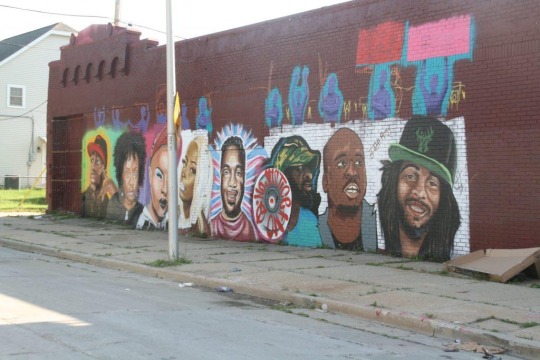
(A mural that recognizes “leaders” involved in Milwaukee’s 2020 protest movement…the mural depicts Frank Nitty, Sam Alford, Khalil Coleman, Jeremiah Thomas, Elle Halo, Tommy Franecki, Markasa Tucker, and Vaun Mayes.)
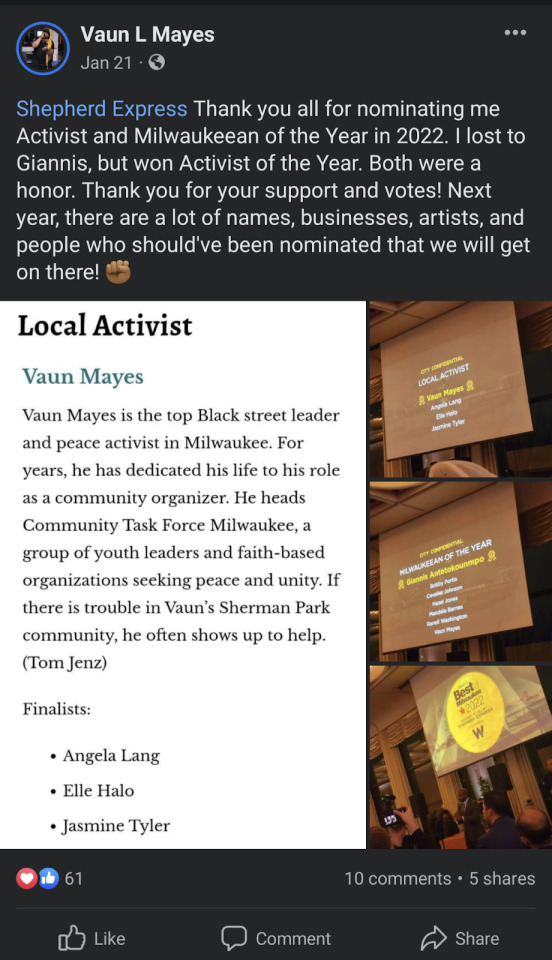
*Note: Some non-profits do excellent work, and are well respected within the communities in which they operate. The non-profit legal structure can be used as a tool that allows grassroots and anarchist formations to operate more freely. However, within a $2 trillion industry employing 10% of the United States population, we find the types of non-profits mentioned above represent a microcosm within a majority. Members of our collective understand the benefits and contradictions of being involved in the NPIC as we have worked within the field and received services from the NPIC. This is not a judgment of those involved within the NPIC structure, it is a call to think critically about the structure.
How Milwaukee Got a Youth Prison: Past to Present (CW: Sexual abuse, Child abuse)
Milwaukee’s NPIC is deeply connected to the carceral justice system and policing, and many violence prevention programs and non-profits are incentivized to work with the police to receive funding from the city. Unsurprisingly, local non-profits ushered in a new youth prison in Milwaukee. To explain how this all came to fruition, we’ll need to lay some ground and talk about the Lincoln Hills and Copper Lakes crises that occurred over the course of a decade. Tracking everything that occurred at these facilities could amount to a separate book on its own, so we'll only be tackling a tiny fraction of events in this section.
According to the Milwaukee Journal Sentinel, the problems began in 2010-2011 under Republican Governor Jim Doyle’s administration. The number of youth prisoners had steadily decreased over the years and in 2011, inmate populations dropped to half of what they were in 2004. For the Doyle Administration, it financially did not make sense to continue running three separate facilities (Lincoln Hills located in northern Wisconsin, Ethan Allen School in southeastern Wisconsin, and Southern Oaks Girls School in southeastern Wisconsin): Lincoln Hills operated at a much lower cost than the other two facilities and state law mandated that a juvenile facility must remain open in northern Wisconsin. This law did not apply to southeastern parts of the state, where most of Wisconsin’s Black and incarcerated population stemmed from. By January 2011, Republican Governor Scott Walker was instated; he moved quickly to close Ethan Allen School and Southern Oaks Girls School, consolidating 100 prisoners into Lincoln Hills and doubling the prison population. Lincoln Hills was extremely short-staffed, the sparse population of northern Wisconsin being to blame. The Milwaukee Journal Sentinel stated, “...juvenile justice experts around the nation were recommending smaller, more localized facilities, Wisconsin went in the opposite direction, consolidating operations in a remote setting.”
In February 2012, Racine County Circuit Judge Richard Kreul sent a memo to Scott Walker detailing a case of abuse. ”The memo Kreul sent to Walker described an incident in which an inmate from Racine was forced to perform oral sex on his roommate and then beaten unconscious. Workers learned of the assault at 4 p.m. They didn’t get the victim medical treatment for three hours.” [Milwaukee Journal Sentinel]. In 2014, when Milwaukee-based Public Defender Robin Dorman learned that one of her clients was not receiving medical treatment or being sent to classes, she quickly learned that her client was not alone. Upon discovering additional allegations of abuse and neglect, Dorman sent a memo to Milwaukee County Chief Deputy District Attorney Kent Lovern, who forwarded it to the Department of Corrections. By January 2015, a criminal probe was launched to investigate Lincoln Hills. What the investigations would unveil was deeply disturbing.
Most of the youth held in the facility were Black children from Milwaukee, though the facility was located in Irma, WI - 215 miles away from Milwaukee (a 3.5-hour drive). Horrendous abuse and corruption plagued these facilities, ranging from physical child abuse to suicide, and sexual abuse and harassment of minors. The Milwaukee Journal Sentinel details the conditions inside the facilities, describing a teen who had his foot crushed by a prison guard. “Inside his room, Evans screamed and held up his foot so the staff could see the bleeding. The Milwaukee teen had lost parts of two small toes, but it would take prison officials nearly two hours to take him to a hospital 15 miles away.” Another incident involved a psychologist commenting on a teen girl's breasts, stating that they looked "rode hard and put away wet." The investigation also revealed that the prison’s lead trainer taught staff to pin inmates by putting their knees on inmates' backs - a technique that could cause suffocation and death. This trainer did not contact nurses when inmates were injured. There were 4 incidents where inmates had broken bones. By December 2015, the facility was raided by 50 state agents and the investigation was turned over to the FBI. Over a dozen staff members quit, were fired, or retired. A $25 Million settlement was reached for those who stayed at the facilities.
In 2018, Governor Walker announced a plan to dissolve Lincoln Hills into 5 smaller prisons spread out across the state. In April 2022, Democratic Governor Tony Evers signed a law that would bring a prison to Milwaukee. By January 2023, Milwaukee Common Council approved the zoning for a new youth prison to be built on the predominantly Black northwest side of Milwaukee. The Facility will not be operational until 2026. The decision was made to put the youth prison in a district that completely lacks an alderperson at the time of this writing (the previous alderwoman, Chantia Lewis, was removed from office after pleading guilty to embezzling $20,000 in campaign funds). Residents were taken off guard by the development of the prison and a majority opposed it, citing the potential decrease in property values as their primary concern. Many non-profit leaders spoke out in support of the facility's relocation to Milwaukee’s northwest side, however, framing it as a way to bring the youth inmates from Lincoln Hills “home”. Sharlen Moore, co-founder of the non-profit Urban Underground and youth justice advocate stated, “We have to figure something out. We have to put them somewhere.” Representatives from the non-profit Ex-incarcerated People Organizing (EXPO) echoed Sharlen’s sentiment. There are currently 69 youths that remain at the Lincoln Hills and Copper Lakes facilities. Alternatives to prisons exist, we’re dealing with people, not objects to shuffle around or “put somewhere.”
George Floyd Rebellion of 2020: A Clusterfuck
During the George Floyd Rebellion, the lack of solid organizing and security culture in Milwaukee led to Black misleadership and celebrity/career activists seizing control and altering the trajectory of a radical movement into neoliberalism along a counter-revolutionary line. The People’s Revolution (TPR) was formed in the early days of the George Floyd Rebellion and was initially spearheaded by Frank Nitty, Vaun Mayes, and Khalil Coleman. These “leaders” quickly proved dysfunctional, as accusations of homophobia and misogyny bubbled to the forefront almost immediately. Throughout 2020, we talked with individuals involved in TPR’s protests and though accounts varied from person to person, what we picked up on overall was that TPR’s leadership fostered an environment that made protests feel unsafe for Black women and queer individuals. On June 12, 2020, TPR leadership was called out in a Facebook live stream regarding accusations of misogynistic and derogatory language used toward queer protestors. While Vaun Mayes showed up to the live stream for “accountability”, Frank Nitty and Khalil Coleman did not. There were repeated attempts to reach out to Frank and Khalil, which seemed to be met with hostility. The presence of misogyny and homophobia are major red flags for any group claiming to be revolutionary. The Facebook Live stream did not provide the accountability process needed to change course. In an ideal world Frank, Vaun, and Khalil would have stepped down from their leadership positions within TPR and undergone a serious accountability process that involved their removal from movement and protest work, if only until genuine efforts towards transformation had occurred.
The effects of misogyny and what we’ll call “weak link politics” have been touched on repeatedly in writings such as Why Misogynists Make Great Informants, by Courtney Desiree Morris, and Basic Politics of Movement Security by J. Sakai and Mandy Hiscocks. As Morris succinctly points out, “There are serious consequences for choosing ignorance. Misogyny and homophobia are central to the reproduction of violence in radical activist communities. Scratch a misogynist and you’ll find a homophobe. Scratch a little deeper and you might find the makings of a future informant (or someone who just destabilizes movements like informants do).” In Basic Politics of Movement Security, Sakai details the story of an FBI informant known as “Tom” who played a role in destabilizing the Black Panthers. Tom got in with the Black Panthers by appealing to patriarchal values. Sakai recounts Tom being called out by a group of local women on suspicion of being an informant, “Oh, its politics that’s so hard for me to learn, ‘cause I had no education… I wanna learn, I’m sorry, give me another chance.” Tom rebuffed in a way that is somewhat similar to the accountability dodging Mayes did during the live stream referenced above. “I am ignorant to a lot of shit, you know? …as far as being a straight male versus y’all community (the LGBTQ+ community), there's a lot of shit I don’t understand… I don’t primarily deal with y’all community.”
We don’t draw this comparison to accuse Vaun or the former TPR leadership of being outright informants. Practically speaking, there’s no way for anyone to know unless evidence explicitly demonstrates otherwise. The point is not to badjacket or drum up needless suspicion. However, we draw the comparison to accentuate that an individual's politics, actions, and consistency should be examined with a discerning, critical eye. Trust and access should not be easily given to those who consistently show up with weak link politics. Sakai states, “...Security is not about being macho vigilantes or being super suspicious… Security is about good politics. That's why it's so difficult. And it requires good politics from the movement as a whole. This is demanded of us… Bad politics covered for agents…it’s that bad politics - like opportunism, patriarchy, sexism, and class privilege - rips up the fabric of our terrain, the area of our radical culture, and weaves it instead into that terrain all their old oppressor politics, their values.”

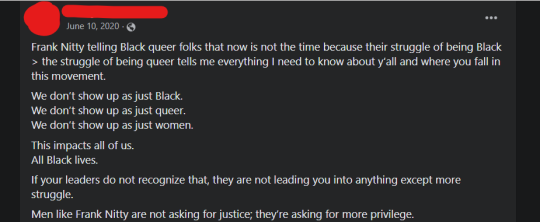

[Defaced mural of Frank Nitty with the words “misogynistic coon” and “sexist” spray painted across it.]
TPR slowly unraveled throughout the rebellion. Despite appointing themselves revolutionaries, TPR operated in multitudes of obvious contradictions. They frequently partnered with local elected officials and pushed electoralism, lobbying, and reform as a method of “revolution”. State representatives such as David Bowen and Jonathan Brostoff publicly aligned themselves with TPR, and attended marches consistently. “They use their resources to help as many people as possible and to push the system to be accountable, especially to Black and Brown people,” said David Bowen to Milwaukee Magazine in September 2020. The excess media attention around the George Floyd Rebellion provided the perfect stage for stooges to bolster their platforms and appeal to potential voters. While electoralism and aligning oneself with the state may seem like a clear pitfall to an experienced organizer or theorist aligned with revolutionary/liberatory movements, it bears explaining to those less familiar. Aligning oneself with politicians, elements of the state, or electoralism is explicitly counter-revolutionary:
“It isn’t revolutionary or materialist to disconnect things. To disconnect revolutionary consciousness from revolutionizing activity, to build consciousness with political agitation and educational issue-making alone is idealistic rather than materialist. The effect has been reformism rather than revolution. When any election is held it will fortify rather than destroy the credibility of power brokers. When we participate in this election to win, instead of disrupt, we’re lending to its credibility, and destroying our own.” (George Jackson, Blood In My Eye, Pg. 26)
TPR’s leadership brought forth a movement of cooptation, empty symbolism, and misdirection. It is no surprise that Vaun Mayes has recently aligned himself with MPD post-rebellion, advocating for increased police surveillance through ShotSpotter technology. According to Sheperd Express, ShotSpotter is an acoustics-based technology that locates potential gunshots via impulsive sound. The contract with ShotSpotter has cost the City of Milwaukee $3.7 million over the past 13 years. “I’d like my ComForce team to get access to ShotSpotter because when we hear shootings in our neighborhoods, it is sometimes difficult to find the location...We are here to help the police and protect the residents, and we are expanding…I think we are setting a standard on how true collaboration and unity is supposed to look. We want to work with the police,” said Mayes, referring to Community Task Force (ComForce), a non-profit he helms which regularly partners with MPD.
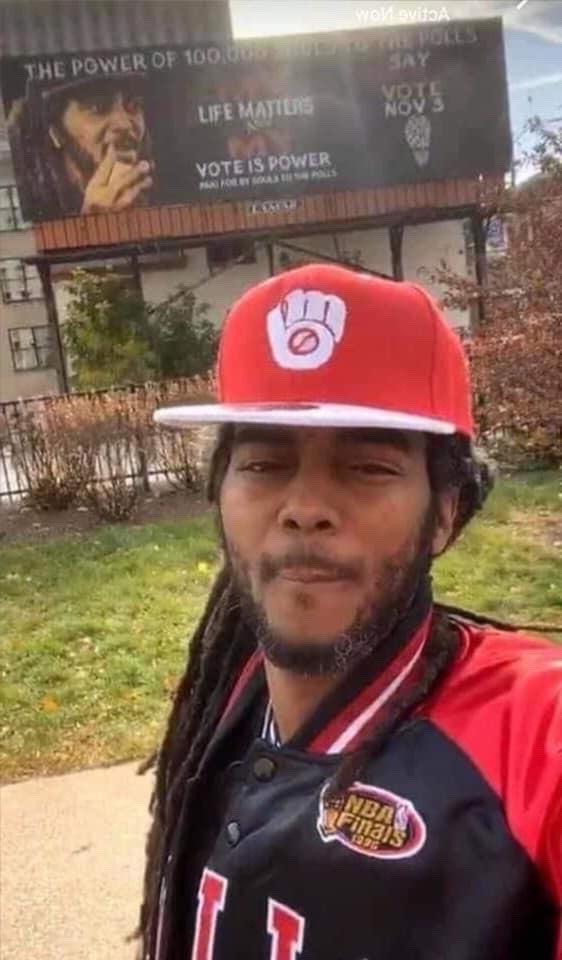
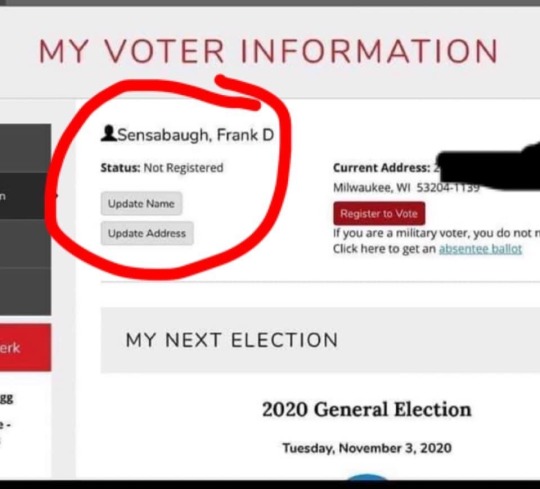
[Photo of Frank Nitty next to a billboard advertisement of himself promoting voting, despite not being registered to vote himself.]
From a security culture standpoint, TPR’s practices were negligent and put protestors at risk. TPR’s marches often lacked street medics, leadership constantly live-streamed their whereabouts, and TPR provided little to no recourse, such as bail funds or free legal representation, for those arrested. Leadership also folded in with the likes of fascist groups such as the Bugaloo Boys, posing as street medics for TPR. The effects of this negligence culminated when the rebellion reached Wauwatosa and Kenosha. According to The Daily Montanan, Wauwatosa Police Department (WPD) managed to create a list of over 200 protestors, and a good portion of that list included members of TPR, as well as people who marched in solidarity with them. The list was created by Dominick Ratkowski, a crime analyst for WPD, and was utilized as early as mid-July 2020. The list was circulated amongst MPD, KPD (Kenosha Police Department), and the FBI office in Milwaukee. Up to 12 agencies received the list. Members of TPR were mailed tickets as high as $1300. The Daily Montanan reads, “On Aug. 28, Gibson (Milwaukee DA Investigator) asked for any lists or photographs of protesters to share with Kenosha. On Sept. 15 the list, which had been shared by Ratkowski, was sent to Kenosha PD Detective Pablo Torres, who worked for the department’s Special Investigations Unit at the time. ‘Here is an updated list of the subjects identified as members or associates of The People’s Revolution,’ Gibson’s email reads.” The screenshot below does not prove that Coleman or TPR leadership was feeding members' information to law enforcement agencies; it is mere conjecture, but we cannot dismiss it as a possibility.

[This post was made on September 1, 2020]
Regardless of whether the intent was malicious or not, a lack of security practices essentially had the same effect as an informant or wrecker: TPR members and leadership had been arrested at several points during the rebellion, and during any of these arrests, police could have confiscated their cellphones to collect intelligence on members and associates. This is why maintaining anonymity is key - never bring a cell phone to a protest, and never record yourself or others engaging in protest activity. Your identity should be your most protected asset. Cover tattoos, piercings, or other identifying features and always wear plain, unbranded clothing. Consider utilizing a pseudonym during protests. Always remember your cell phone and other pieces of technology can act as a cop, and avoid the potentiality of surveillance as much as possible.
Our advice for those participating in protests and riots is to return to analog styles of communication (written notes, utilizing walkie-talkies, communicating face-to-face, implementing coded language, etc). Detailed in episode 8 of the Alphabet Boys podcast, an FBI program known as “Social Media Exploitation” was utilized during the George Floyd Rebellion. This program allowed the FBI and local law enforcement agencies to mine social media accounts and create files on individuals without probable cause. The host of Alphabet Boys, Trevor Aaronson, goes on to detail the story of a woman charged with a crime for throwing her bike down near a police officer. She was captured on a police body camera and identified by law enforcement through social media posts, specifically by matching photos of her biking gear with her attire in the video. Police were able to attain a warrant to search her home and she was charged with attempted aggravated assault of a police officer, a second-degree felony. Police reforms, such as body cameras, are weaponized against those who dare to resist the state. If there is a will to charge you with a crime, there is a way. People should always keep in mind that their social media presence is likely being monitored and should try to practice good digital hygiene. Intentional mass arrests are an outdated tactic of the ‘60s and ‘70s; in the present day, arrests should be avoided if possible - you do not want to be logged into any state system as it makes it easier for law enforcement to target and track you for an indeterminate length of time.
Ultimately, TPR’s influence managed to assimilate many young people into their organization, placing youth directly in harm's way. This disillusioned, traumatized, and embittered many young people. Tyrone Randall, a participant in TPR’s protests, was pinned by police, left on the ground, and struck by a car. Tyrone was left with broken ribs, a broken pelvis and thousands of dollars in medical debt. TPR’s failures fostered an environment that made many reluctant to return to grassroots organizing as a whole. Former members and youth of TPR were quickly assimilated into the NPIC once the organization grew stagnant.
Post-George Floyd Rebellion: Where are these niggas?
Post-rebellion TPR quickly dissolved, and few of the former leadership remain active. In April 2022, Khalil Coleman was found guilty in the first degree for a robbery that took place in Kentucky in February of 2021. Coleman attempted to rob a trap house with the coerced aid of a minor and was later sentenced to 10 years in prison. Coleman maintains that he is innocent via Facebook posts, and he has been soliciting support for his appeal through an online petition.
Around August 2020, Frank Nitty led a March from Milwaukee to Washington D.C. In the immediate aftermath of this commemorative journey, several scandals began to surround Nitty. Rumors of Nitty stealing and mishandling donations circulated on social media, which led to some accusing him of using the funds to take white women on dates. Additionally, a Facebook group of “sister-wives,” boasting nearly 200 members at one point, formed around Nitty. All jokes aside, around November 2020, Nitty was accused of sexually assaulting four separate women. He was arrested and held in jail for a short period before his bail was posted, and charges were never brought against him. After 17 months, prosecutors decided that there was not enough evidence against Nitty between the four women who accused him and dropped the charges completely. Based on Nitty’s history of misogyny, we believe the women who accused him. Nitty’s whereabouts and current activity remain unclear, as he has seemingly disappeared from Milwaukee altogether.
Vaun Mayes remains active in Milwaukee’s non-profit and organizing scene: He currently remains a leader of ComForce, engaging in ambulance chasing. Vaun has continuously aligned himself with the police, local politicians and even noted transphobe/huckster Dr. Umar Johnson.
Conclusion: Wrapping this shit up
2020 demonstrated that Milwaukee is not politically prepared to resist the rising tide of fascism. It is a frightening position to be in considering that the RNC (Republican National Convention) is coming to Milwaukee summer of 2024. The fascism Black people in Milwaukee have had to face has primarily been institutionalized, moderated through politicians, policing, prisons and racist state/city policy. The city has rarely had to face off directly against fascist demonstrators. There is no dedicated Black Bloc or anti-fascist presence prepared to push back against the fascists that will come to gather in Milwaukee summer of 2024. The city is seeking to import nearly 4,500 officers to Milwaukee for the convention. Frankly, we wouldn’t recommend an outright counter-demonstration against the 2024 RNC. Marginalized people should stay home the day the RNC comes to town. Those interested in preparation should get street medic training, and learn how to treat gunshot wounds. Black communities situated directly near the RNC should prepare their neighborhood or block in community self-defense tactics. Prepare for violence but do not seek it out.
Strategically there are stronger opportunities for resisting. The youth prison coming to Milwaukee’s northwest side should be resisted, and the youths that remain captive in Lincoln Hills should not be abandoned in cages of the state. A non-carceral solution is desperately needed. We're not sure what the exact solution looks like for Milwaukee, but answers have already been conceptualized in writings such as Instead of Prisons by the Prison Research Education Action Project. The text details an experiment done in Massachusetts in 1972 to decarcerate the state’s juvenile prison system. The majority of youths returned home on parole, some were sent to a local university to work with a student advocate for a month. The text continues, “The administrative system was decentralized, with seven regional offices set up to make all decisions about individual youth placements and needs. Almost all services for the juveniles were contracted from private agencies, resulting in the creation of a wide range of community programs.” It advocates cutting ties with the criminal justice system, including instances of parole and probation, releasing prisoners to community-controlled support and peer groups on a case-by-case basis instead. The writers advocate that instead of serving the rest of their sentences, former prisoners should be involved in restoration processes. The strategies mentioned above are intermediary steps towards prison abolition. The authors note:
“We caution strongly that all interim as well as long-range strategies be considered only after conferring with knowledgeable prisoner and ex-prisoner groups. Interim policies crucially affect the lives of prisoners still inside the system and many ex-prisoners on the streets. What seems a paltry and therefore unacceptable change to those outside the wall, might be a highly significant and desirable change for those who are caged or under control in the streets. If there are differences in strategies between prisoners who have experienced the day to day reality of prisons and prison changers who have not, take the time to hammer out differences and reach agreement. Strategies and tactics that are not in unity weaken the total movement toward systems change.”
People interested in building a truly revolutionary movement should study the principles and histories of anarchism, the Anarkata turn, Black radicals, and anti-state communism within groups. White organizers need to step back and follow the lead of Black radicals or get out of the way. Deprioritize the visibility of individual organizers and the mindset of individualized leadership or hierarchies. The aim should be an anonymous and autonomous mass movement of free association that centers issues of the most oppressed, the most marginalized, the problems of the lumpen/lumpen-proletariat (Black, QTGNC folks, those living with disabilities, the poor, the houseless, etc…). The organizing methodology outlined in Move Like Mycorrhizae from Afrofuturist Abolitionists of America, demonstrates best practices. Organizing in this way provides a layer of security and protection from opportunists, clout chasers, and potential informants or state agents.
We can’t tell you what to study, what to do, or how to organize. We can only suggest that anyone who reads this zine study past and present liberation movements of colonized people, both within and outside of the United States. Learn where others have failed or succeeded. If the conditions are right, repeat what has proven successful and try not to repeat mistakes. It's the principle of Sankofa; meaning “go back and fetch it” - take what is useful, leave behind what is not. Studying, organizing, and remaining principled in the liberation struggle is a lifelong commitment. We’ll never stop learning; movements will change, tactics will change. New theories and organizing methodologies will need to be established from the foundation of what previous Black radicals left behind. Studying and organizing alongside BARs (Black Anarchic Radicals) and the Anarkata turn guided us to our current political trajectory. We don’t believe in authoritarian methodologies, cults of personality, or that Black people need a “leader” to effectively organize and win. There will be no vanguard to lead the masses to revolution, nor is it the role of the political theorist.
Frantz Fanon stated,
“To educate the masses politically does not mean, cannot mean, making a political speech. What it means is to try, relentlessly and passionately, to teach the masses that everything depends on them; that if we stagnate it is their responsibility, and that if we go forward it is due to them too, that there is no such thing as a demiurge, that there is no famous man who will take responsibility for everything, but that the demiurge is the people themselves and the magic hands are finally only the hands of the people.”
As the tide of fascism rises, as climate change accelerates, as technocratic corporations advance, as living conditions under capitalism worsen - political and state repression will become more visceral. We saw it in 2020, with state agents snatching protestors off the streets in unmarked vehicles. We saw it in Kenosha when local law enforcement stood in league with fascist armed militias. We’re seeing it in motion with the development of Cop City in Atlanta, a project with international implications to further militarize the police, preparing them for urban warfare with citizens. If there is any time to gain urgency, to connect and organize within your community, it’s now. The politics of capitalism, of fascism, is ultimately a politic of slow death and suffering for the many in exchange for short-term gain and excess for a few. We hope to see the end of this fetid, vile system in this lifetime or the next.
4 notes
·
View notes
Text
Escape Attempt #1
wordcount : 1.8k+
cw : self harm, mention of past torture, suicidal behavior
tropes : lab whump, lady whump, failed escape attempt, manhandling, whumper as caretaker, sensory overload, wound agitation, blood (everywhere)
***
Previous Chapter
John laid her on the infirmary bed, the white sheets instantly turning red. He left, and Professor Clayton replaced his absence with Lisette trailing behind. He had accompanied Avis to the institute, wrestled against five foot long greenery and walked over the pile of carcasses, yet his coat and pants doesn't look affected at all.
"Fenrir, I wager I never properly introduced myself."
"I've heard about you. Get lost."
Clayton glanced at Lisette. She hurried to the storage room. His side leaned against the bedframe. He reached for Avis's ankle. He held it in a vice grip. Plastic casing rubbed against gaping wound.
Avis grit her teeth, ended up voicing a guttural groan instead. Her voice was strained as she managed a 'stop'.
"I'll stop if you let me work on you. Cooperate."
"Just kill me and get it over with."
Clayton twisted his grip. The burning sensation multiplied. "It would be a mercy. Don't you understand? You lost the choice to kill yourself the moment you're trapped with us."
"Watch me," Avis said between grunts of pain. The edge of the wound on her ankle skinned raw. She tried catching Clayton's hand, but he had withdrawn his hold. He went into his pocket. The shock stunned Avis's like a slap to her face.
"Alright, try. Right in front of me. I'll help you even. Say the word, and I'll turn on your shock bracelet to full blast. You'll scream and writhe under this bed until you shit yourself. After I'm sure you're dead, I'll took your brain and put it inside a warbeast. I'll save the handful of memories that makes you you. The next thing you know, you're tearing your comrades limb from limb and there's nothing you can do about it."
Avis didn't bother to hide the fear in her face. It was abhorrent. Even the most pro-monarchy man she met would squirm with the idea. She think back to the warbeast she'd slain. Their eyes, does it ever glowed the way a human would? The bout of nausea was back. Avis covered her mouth, swallowing a gulp of saliva.
Lisette was back. She was carrying a table filled with medical kit. There's a thin smile on her face. A cross between smug and content. Did she heard?
Professor Clayton doesn't wait for permission. He took a small screwdriver, methodically disassemble the ankle bracelet. The man is practically oozing with competence. His steps were hurried but certain. Years of experience in researching alien technology shows clearly in the lines of his face and the coat he wears.
Meanwhile, Lisette worked on her smaller scrapes and bruises. She cleaned her up, dabbing a soaked rag across her bloodied face. She started from the top, wiping up Avis's blood matted hair first. Cool water dripped from her neck. Avis supressed a shiver. The intern nurse's fascination to her scars and peculiarities had died down. Lisette didn't even seem to care if she is alive. She grab a clump of hair, pulling it from the base of the scalp. All that for Avis to lift her chin.
"Cut it out, Lise."
"Stop what? I'm taking care of you."
Avis let it slide. Frustration welled deep inside of her. She let Lisette tug at her shoulder, poke and prod the bruises on her back like it was nothing. Her fingers somehow managed to find every point her body hurt most and make it worse. She hated it, the way people would play others like a toy if they could get away with it. She looked down on the bed, watching her shaking fingers. Avis wasn't feeling particularly cold, but her hands just wouldn't let up. She wondered how they distributed their tasks or what Lisette and John will do after their internship.
"What's wrong?" Lisette asked.
"My hands."
Lisette frowned. Concern crossed her face. Even Clayton stopped.
It was Avis turn to ask now. "What's wrong with me?" As if anyone would give a straight answer.
"Nothing. The trigger serum wasn't exactly a full success is all." Clayton draw a small incision on her ankle. The pain was dulled. It flared slightly as he fully opened the second layer of bracelet clinging on to her skin. "The Fenrir formula adjusts it's effects depending on the host. You'll always get the same enhancements of course, but each of it's potency differs in each person. You and the first Fenrir weren't the same, obviously. Not even similar. We need to run some basic test first before your reeducation. During your reeducation, we'll recalibrate the trigger serum. And then, you'll go through this test again. Ready as ever."
The professor dips a wad of cotton to a small jar. He gently dabbed it against the skin. The oily fluid runs againt the burning wound, causing Avis to wince.
"Now, now, don't flinch. I assure you, your next test will be so much more this would feel like a gentle stroke in comparison."
Avis scowled at her doctor. Fucking fantastic. Another round of tests, surgeries, physically molding her into the perfect hound. And a long session of brainwashing, mentally shaping her until she could strangle her comrades and derive joy out of the act. Avis needs to escape. And she doesn't even know which research facility they held her in. Empire's Defense Department my foot, practically every Institute is made for them. It's simply the easiest way to gain funding.
Clayton and Lisette left shortly after. The entire session with John passed like a dream. He was strangely sheepish. Unlike yesterday, he doesn't bother to strap her arms and legs. Avis was too tired to notice. Or even think. She slept.
A couple of days have passed when her hands and legs stop feeling like stone. It was midday. There's no other patients but her. One nurse stationed near the door. The same one she'd seen when Lisette brought her here to recover from her bruised ribs. It doesn't took long for her to notice Avis was staring.
"Yes, Avis? Anything you need?"
"Uh, some water please." Avis looked away, heat growing in her cheeks. Is she really that obvious? Embarrasing. Valerie was nice. She was the only one who called her with her real name. Shame knotted in her gut. Just a minute ago she was thinking how to incapacitate her. If only Valerie knew the reason why Avis was staring at her.
Valerie set the glass to her bedside. "Next time, talk."
Avis mouthed a thank you. She stared at her drink, unwilling to touch it. The beige walls of the infirmary looks a lot like the first hospital she got into as a patient. It was a strike that had gone awry. She was separated from her friends. The Empire's officers doesn't care if she was young or a woman. She could still remember the faint taste of rubber boots in her tongue. Her broken leg had healed a long time ago, but the dull ache in her foot stays every winter. Back then, Emmett and Sherman hadn't joined their organization. James got arrested. Their old friends like Thomas and Mike were either too injured or busy dealing with the fallout. Nancy alone had to hold her in a bridal carry.
"Well? Aren't you going to drink that?"
"Sorry, Valerie. Just zoned out a bit."
The infirmary nurse sat beside her. "Had something on your mind?"
"Yeah, actually. Do you think I should be reeducated?"
"I'm not an expert opinion on that. You should consult your handler."
"No, I'm not asking for you to revoke my probationary status. I just want to know your personal opinion."
Valerie pursed her lips, her face drawn in concern. She glanced at the camera in the ceiling. It's too unreliable to pick up sounds or even the movement of her lips.
"I'm conflicted to be be honest. You... you did a lot of bad things to other people, but when I got to know you better, it's obvious that you're just lost. Those Heretical men used and abused you. You're one of the good ones, Avis."
"Thanks," Avis said. Her heart sanked. "I'm really sorry, though."
Before Valerie could react, she swung the glass to her face.
***
There are two major types of pain. Acute or chronic. There are other classifications based on what caused it for or how debilitating it is, but it was irrelevant. In the context of Avis triggers, there's three. All of them present in her current situation.
She was backed to a corner. The soldiers were split in two. A small squad were standing at the bottom of the stairs, while a couple of them guard the door she sneaked out from. Drops of blood trailed her departure. It formed a line, then a puddle below her wrist. Avis cradled her bleeding hand. A piece of tape still stuck on the edge of her wound. Her hand is throbbing, a continous pulse that quickens alongside her heart rate.
A man started to climb towards her and Avis brings her hand on the edge of the wound. Clawing at the edges.
"Stop," she said. "Took one step closer and I'll fucking eat you." She hissed, partly due to pain and a spontaneous urge to do so. The hiss turned to a groan as she dip her fingers in. The floor sways slightly under her feet. Red stained her hospital gown.
This is manageable, she insist. What was she thinking? She doesn't even know where she is. It's fine! People had run away without figuring out where are they are. But she's escaping an military complex. Stupid, reckless! But she doesn't have a choice right? Barnes had warned her. Clayton had fucking taunted her.
Avis shield her eyes from the light, blood running through her face. The buzz of fluorescent lamp almost drowned the murmur of conversation between soldiers. Her senses grew sharper with every hurt she inflicted. A dull ache growing on the base of her nails, gums, and joints. This time the transformation was slower. Passive, even. Slow enough, she could understand the change in her mindset. Her stomach was already empty before she did her escape, but now the hunger pangs were almost unbearable.
Avis taunted between gasps of breath, "Go on, shoot me like an animal."
The door at the bottom of stairs swings open. Someone spoke, and the voice sends a chill to her spine.
"Don't listen to her. She can't hurt you. She's not under the trigger serum."
Professor Clayton strides up the stairs. Avis's legs scrambles backward but there's only solid concrete behind her. His eye settled on her arms.
"You pulled off your IV. Are you afraid of needles?"
"No, just don't want to be drugged again. It's what you do. You'll wait until I let my guard down before testing."
Avis glowered. The armed guards advanced to protect Professor Clayton. Nothing they give is safe. Anything could be drugged. Food, medicine, even the air she breathed.
"The test wasn't due for a week. But I could speed things up for you. How about the day after tomorrow? How does that sound?"
She tackled him, but there was no power in her arms. Avis collapse on his chest, her vision darkened. Gravity rapidly dragging her feet. The last thing she remembered was her nails, puncturing Clayton's shirt and flesh.
Next Chapter
#whump fic#lab whump#lady whump#failed escape attempt#whumper as caretaker#manhandling#sensory overload#suicide cw#self harm cw#past torture#injury whump#bleeding out#wound agitation
11 notes
·
View notes
Photo
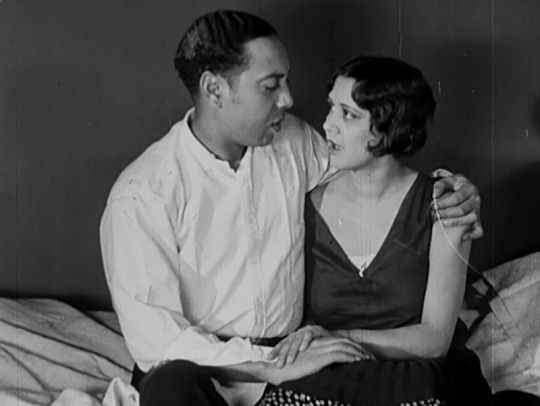
The Scar of Shame (1927)
From cinema’s earliest days, depictions of black people on film seldom delve into the beauty and complexities of their lives. More than a century after the artform’s emergence in France and the United States, it remains a problem in Western cinema. Two men who recognized this problem at the height of the silent era were Austrian-born movie theater owner David Starkman and African-American vaudeville comedian Sherman H. Dudley. Starkman’s theater in Philadelphia was situated in a neighborhood that was becoming increasingly populated by blacks, and he wanted to promote local interest in his theater by finding films starring black characters. With nothing being churned out of Hollywood to assist Starkman, he allied himself with Dudley to finance films featuring all-black casts. Their company, The Colored Players Film Corporation, made four films before financial difficulties stemming from unwise budgetary decisions on their last production saw the company bought out. Half of the Colored Players Film Corporation’s works are lost films (check your attics, basements, and fallout shelters). Their final film is The Scar of Shame, directed by Italian-American Frank Perugini, and is one of the best examples of “race film” still accessible.
While Hollywood neglected black actors and actresses and often put them in stereotypical, oftentimes subservient roles, independent studios from the silent era to the 1950s pooled their resources to provide these black actors and filmmakers work. The films often played to cinemas primarily serving a black community, especially in the American South where cinemas there were segregated (in the North and West, Jim Crow laws were not as extensive, but there may have been de facto segregation). Race films, when presented to modern audiences, trod upon unfamiliar thematic ground, covering issues that audiences of all races might never have seen in any film – even in contemporary black cinema made apart from the major Hollywood studios. The Scar of Shame examines class differences among African-Americans with delicacy, employing some of the best filmmaking seen in a silent-era race film.
Alvin Hillyard (Harry Henderson) is a composer-pianist living in the city, trying to make a name for himself. One day, he sees a young woman named Louise Howard (Lucia Lynn Moses) being physically abused her alcoholic stepfather “Spike” (William E. Pettus). Alvin stops the altercation, knocks the daylights out of Spike, and brings Louise to the boarding house where he is staying. As Alvin’s landlady, Lucretia Green (Ann Kennedy), agrees to let Louise stay if she helps with house chores, Spike considers a deal by his friend, Eddie Blake (Norman Johnstone), that would see Louise hired as an entertainer. Eddie is Spike’s liquor supplier, but the latter has reservations in following his friend’s scheme. Later, Alvin proposes to Louise and she accepts. Their rapid marriage is complicated when Alvin refuses to introduce Louise to his mother, saying: “You don’t understand – Caste is one of the things mother is very determined about – and you – don’t belong to our set!”
Also starring in this film are Alvin’s student Alice Hathaway (Pearl McCormack) and her father, Ralph (Lawrence Chenault). The Nicholas Brothers, Fayard and Harold, are uncredited as tap dancers at the Lido Club, at the very beginning of their careers in dance.
David Starkman is credited as the screenwriter for The Scar of Shame, but the presence of class divides in this film may have been a compilation of suggestions made by the many African-Americans who informally advised him and director Frank Peregini on this film. The Scar of Shame indirectly touches upon race relations, preferring instead to show how two protagonists attempt to distance themselves from poverty (which, arguably, is portrayed as something “inherent” to being black in the United States). The opening intertitle frames the film as such: the culture and environment where one was raised in determines the conditions of an individual life. There is nothing groundbreaking in that observation, but Peregini’s work treats this as a determiner in life and death. Alvin may be African-American, but much of his behavior is coded as white. From the music he composes, his attire, and the way he speaks through intertitles, the film suggests that – in order to make a living as a composer – he has been forced to adapt to white norms to distinguish himself from his colleagues. His paternalistic behavior towards Lucretia positions him as the embodiment of the opening title card.
Lucretia, who attempts to adopt Alvin’s bootstrap-pulling ways (but “remains” black where Alvin is not, despite the fact both actors have paler skin than the rest of the cast), is occasionally condescended towards because of her class and gender. As a woman, The Scar of Shame believes, she is not as wise or aware of life’s struggles and paradoxes. But her conduct, portrayed beautifully by Lucia Lynn Moses in the film’s best performance, seems incongruent in times of contentment and desperation. Lucretia’s inconsistent characterization muddies the intentions of the storytelling – The Scar of Shame wants to pry into the imperfections of even it seemingly virtuous characters, but stumbles because of its internal contradictions (almost entirely placed on Lucretia). Despite all these writing flaws, The Scar of Shame’s final scenes feel earned, encapsulating the film’s message in respect to the stations in life that Alvin and Lucretia were born into and grew to subvert.
The most famous (and prolific) producer/director of race films is Oscar Micheaux. Micheaux, who worked in the silent era and in talkies, had spartan production values to his films, which – when adding in the rough editing often found in Micheaux’s movies – can make his work difficult to watch. No such concerns exist for The Scar of Shame, which, over a variable runtime which is generally just a few minutes over an hour (it depends on the speed of one’s print), is patiently shot by cinematographer Al Liguori and edited brilliantly (uncredited editor). The Scar of Shame is sophisticated in its use of framing and editing devices, most notably a very early use of flashback – a device used in film as early as 1901, but almost never utilized in silent films.
For the Colored Players Film Corporation, they decided to open their checkbooks for The Scar of Shame to pay for higher-quality actors and production design. Starkman and Dudley believed this investment would fend off competitors, and attract a surge of ticket sales for their latest film. A sales surge did transpire, but it was not enough to cover the new expenses both men agreed upon. With the rise of synchronized sound in motion pictures, this spelled the financial doom for the Colored Players Film Corporation – The Scar of Shame would become the company’s fourth and final film.
Thus ended a noble joint attempt between white and black filmmakers to provide black audiences movies that cast them in different lights than most of Hollywood at that time. Even without the Colored Players Film Corporation, the race film industry remained competitive if only because studios specializing in race film were prone to financial trouble. Recently restored by the Library of Congress (albeit not an inductee to its National Film Registry), The Scar of Shame will continue to be an outlier in its depiction of class tensions among African-Americans. It may be an imperfect attempt to do so, but one can scarcely list off modern titles than intently do the same. Hopefully with a greater groundswell in scholarship regarding race films will audiences be more conscious of this parallel industry to a Golden Age of Hollywood barely noticing what is transpiring beyond its studio lots.
My rating: 8/10
^ Based on my personal imdb rating. Half-points are always rounded down. My interpretation of that ratings system can be found here.
#The Scar of Shame#race film#silent film#black film#TCM#Frank Perugini#David Starkman#Lucia Lynn Moses#Harry Henderson#Norman Johnstone#Ann Kennedy#William A. Pettus#Lawrence Chenault#Pearl McCormack#My Movie Odyssey
3 notes
·
View notes
Text
Zero SR vs Energica SS9: EV Race
Brandon and I recently drove down from Monterey to LA on business. He rode an Energica Esse Esse 9 while I rode my Zero SR. One of the main features of the Energica is the full support of level 3 CCS stations which can deliver a full charge to the bike in as little as 20 minutes. One of the goals of the trip was to visit as many CCS stations down Hwy 101 as we could and determine if it was possible to make the trip entirely utilizing CCS.
Meanwhile my Zero SR was equipped with 4 digiNow SuperChargers capable of delivering 13kW from the plentiful selection of level 2 stations available at every town and sometimes in between. This gave my Zero with a Power Tank a consistent 1 hour charge time if totally empty but required use of either dual J1772 stations or a single Tesla Destination station.
On Thursday we drove down and mostly explored what was available for CCS while meeting with friendly fellow riders and documenting stations. Late Thursday night we stayed with a friend in Hollywood and discussed the plans for the rest of the trip and reviewed footage taken earlier that day.
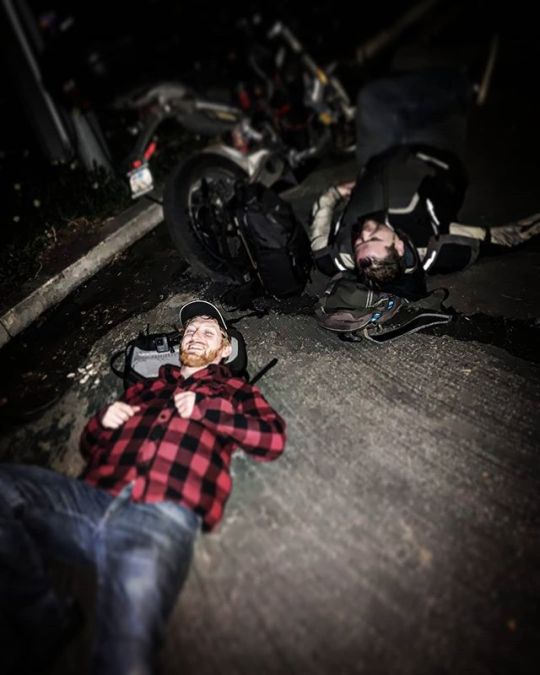
The next day Brandon and I parted ways to take care of business but hatched the idea of a race back to Monterey on Saturday. I would be starting in Irvine and Brandon in Long Beach. Neither of us thought the other stood a chance, and we both proclaimed our own easy victories. Obviously I would win, I had consistent 11-13kW and a nearly infinite amount of stations. Brandon had powerful 23kW stations as long as he was in the greater LA area. Beyond that they grew fewer and fewer, sometimes only one per town, and in some cases the single one was offline. I fully expected him to be far ahead in the morning with me easily overtaking him when he was forced to subsyst on level 2 charging at 3.3kW. He, on the other hand, figured he would gain an insurmountable advantage early on and the times he would have to utilize level 2 would be inconsequential. We were both wrong.
The night before the race I mapped out my route via PlugShare. It should be noted that I had rode this route once before with Brandon about 15 months prior. He was my guide because he had ridden these roads constantly and knew every station along the way. I remembered a couple of his preferred stops, but not all of them. On his end, he was going on the information he'd learned on the trip down. He knew the roads but not the level 3 stations. I would also like to note that I was carrying all of the gear. This includes about 40lbs of 6awg wires and portable charging stations in the case on my bike because primadonna Brandon refused to sully the beautiful Energica with things like luggage or straps.

Saturday morning I awoke shortly after 6am. My gracious host was already awake and playing Hearthstone on his PC but offered to cook breakfast for me, which I readily accepted, not knowing which charging stations were near any sort of amenities. I was also accutely aware of Brandon's inability to function before 8am and figured I would ensure my victory by starting early. By 7:15 I had said goodbye and was on the road. Please note the awesome matching Teslas of my host. Zero hidden in middle of shot.

My first stop was a complete failure. I had planned out a reasonable office complex in Santa Monica that had a non-shared ChargePoint. I made great time, but one of the stations was taken by an EV car. As I plugged into the single station I quickly scanned Plugshare for alternatives. The Wells Fargo building nearby promised 8 J1772 stations, but I quickly discovered it was locked for the weekend, and also apparently under construction. I then wandered, seemingly aimlessly, for some time as my GPS on my aging iPhone 6 is spotty and unreliable. I eventually found myself in a paid parking lot at some sort of recording studio fussing with Tesla Destination chargers. They worked but shut off after ~4 minutes. I tweaked the settings on my chargers to skip the ramp procedure so I could just reset every 4 minutes and grab full power, but this grew tedious. A security guard wandered out after 20 minutes to investigate what I was doing, but wished me luck after I explained what I was doing. I found another potential spot for consistent charging and left having only gained about 25% battery and paying an astronomical $12 parking fee.

Brandon was awake by this point. Not only awake, but also apparently playing in Malibu Canyon a mere mile or two from me.

My next stop was perfect. It was a 4 story parking garage between Sherman Oaks and Van Nuys that promised 4 ChargePoint stations on the roof. As it was Saturday I figured it would be empty. I was right. Not only was it empty but it also had a shaded alcove with 3 benches where, presumably, employees took smoking breaks. I popped the drone out and took a little footage. I was able to get full power off 2 stations and completely top off having wasted over an hour getting lost in Santa Monica.

At this point I made sure to share my location on my phone with Brandon. He had already done so for me so I felt it was fair that he should see what I was doing. Due to the inconsistency of my GPS this did make him paranoid as apparently my map location had a tendency to warp. My next stop was one I remembered from the previous trip, the Amtrak station in Carpenteria. This one was extremely important because I remembered 4 Chargepoint plugs, bathrooms, a mini mart, and a beachfront burger joint. I arrived at around 15% charge and discovered, much to my dismay, an EV car plugged into one of the stations. These were shared stations meaning each station has the capacity to deliver 6.6kW total between 2 plugs. In order to get full power I would need to be the only one at the 2 stations. This proved impossible so I plugged in 3 of my chargers into the 2 plugs and set myself to 3/4 charging capacity.
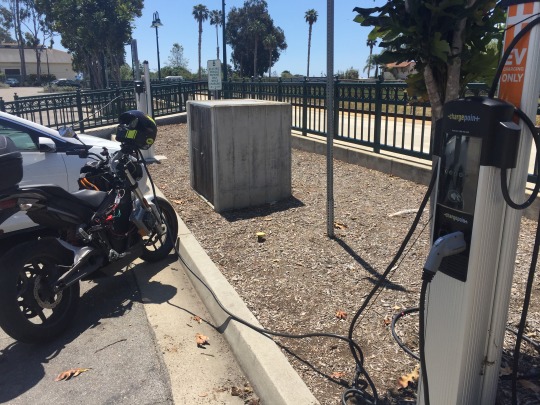
I checked my map to discover I was actually ahead of Brandon but he was closing in fast. I thought he might watch his map and come say hi but instead just blew by on highway 1 at high speeds.

Sadly my 3/4 charging speeds meant I would need over an hour, so I had a burger at the tiny beachfront joint. It was noon by this point. After I was done there it came time for one of the most enjoyable legs of the trip: Highway 154 to Chumash Casino. This is an absolutely gorgeous twisty road that climbs up and down the mountains and a must for anyone traveling the 101 on a bike. As it ends it spits you out at Chumash Casino which is jam packed with free level 2 charging stations. I plugged in, went inside the casino, and had some sort of asian steamed veggie bowl at the food court so I could feel good about patronizing the establishment. I don't have a photo of this because I was trying to do a facebook livestream but apparently the signal in the garage is insufficient. Refreshed and full of bok choy, I resumed my trek north.
My next stop was the Lowe's parking lot in Santa Maria. I had scouted this out on PlugShare and knew it was a goldmine. 10+ free J stations? Heck yeah. I used to live near another Lowe's that had a similar setup so I was certain this was a good choice. It was. I parked, plugged in, and checked my map. Brandon was a mere 0.3 miles away at the CCS station at a BMW dealership. It was at this point my brother texted us and said he had made a ton of cheeseburgers on the grill and we should hurry home to eat them. I found out later Brandon had not eaten all day and was basically drooling in his helmet the next few hours thinking about burgers. I sat down behind a shaded wall in the parking lot and uploaded the following picture to FaceBook:

This generated a buzz because Brandon was posting about his progress and people realized we were damn close. This, to me, indicated some theatrics were in order. I noted that my batteries were quite warm at 120F, and Zero's safety measures shut them off around 136F. However, the cautious way I was riding meant my batteries cooled down as I rode and warmed up as I SuperCharged. I knew this, and I knew how to keep them from overheating. But I posted like I was concerned about this to generate a little drama. Obviously I was going to win at this point. Brandon was a couple hundred yards away and running out of CCS stations. What chance did he have? In fact, his very last CCS station was next and it only gave 17kW. I topped off, packed up, and headed to Paso Robles.
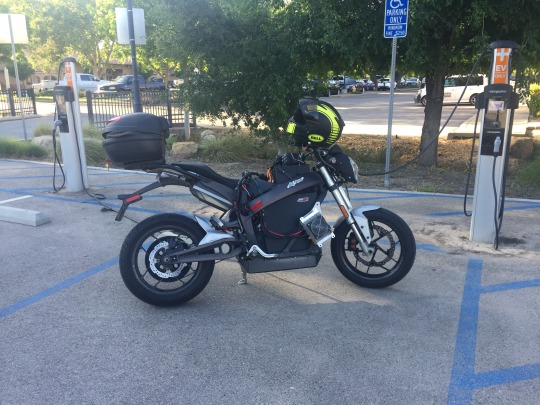
Because I was so confident in my imminent victory I decided to delay posting of my photos until I was done and packing up rather than having just arrived. I had planned to use a high-power Tesla Destination charger in Paso Robles, but some inconsiderate Tesla owner, no doubt a paying guest of the hotel, was using it instead. Disgusted, I backtracked to the South edge of town and the promise of 4 open ChargePoint stations. There I encountered 2 homeless men keeping out of the sun thanks to a large tree on the south edge of the parking lot. I asked if I could share their shade and struck up a conversation. It was a father, Jim, and his adult son who had fallen on hard times, had been living in a shelter in San Luis Obispo, but took the train up to Paso to visit mom for Mother's Day. We chatted and he charged his phone off my bike. As we talked I checked my map and realized Brandon was literally about to pass by within 50 feet.
"Wait for it," I said to my new friend Jim. About 10 seconds later the banshee wail of the Energica could be detected. Brandon breezed through town, looked right, and gave a friendly wave and beep while heading to his CCS station. Jim was over the moon with newfound excitement. I hope he gets back on his feet.
Despite pulling ~12kW from the 2 ChargePoints, Brandon was fully topped off and heading North before I was even done. This is where it truly got interesting. North of Paso the headwinds kick in STRONG and there was literally no more CCS for Brandon. I planned to stop at a place called The Mill at 43 Olive Ranch which has several Tesla Destination chargers and a Clipper Creek J1772. The final stop would be King City which had a single Chargepoint station. Brandon would have to stop at The Mill to top off before King City, and it was basically all over for him at that point.
I pulled into The Mill to find it totally empty. No Brandon. Turned out he found a nice, fat truck to draft behind and, AGAINST ALL ODDS, made it from Paso to King City in 30mph headwinds on a naked sportbike. Hell, it killed half my battery to get to The Mill a mere 30 miles away. Tiny voices of doubt started to make themselves known. But surely he could only charge at a paltry 3.3kW in King City, right? I was drawing 12kW and could draw 6.6kW once I hit King City which was double his rate.

I cautiously drove to King City. As Brandon pointed out in one of his posts during all of this, the Zero batteries were never meant for this sort of duty. They are meant to be bulletproof. The cells are encased in a flame-retardant epoxy. This keeps them super safe but makes cooling them a bit of a challenge. Running air, water, or ice along the outside does not appreciably lower the temperature of the cells deep in the middle of the pack. They have to naturally dissappate heat. I'm aware of this so I almost never went above 70mph to allow my pack to deal with the constant stress of lugging me and all of Brandon's 6awg charging cables. My batteries never went above 124F which is, as I posted on FaceBook, where stuff gets REALLY fun. The hotter the battery the less resistance there is and in Brandon's bastardized phrasing, more opportunities for 'dank whoolies'.
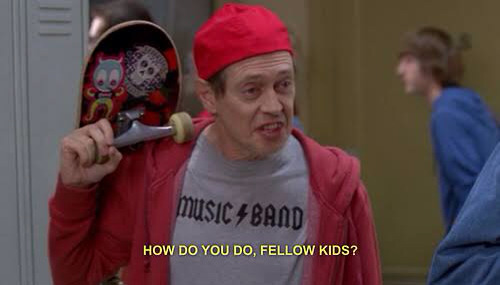
I arrived in King City. This was our first stop a mere couple days before. We were both around 30% if memory served but I was charging at twice his speed at this point. This was where the biggest decision was made. Brandon assumed he had it in the bag at this point, because the road ahead was Carmel Valley G16, an incredibly twisty difficult path. I have driven this road. I've driven it in both daytime and nighttime. It is completely acceptable in daytime. Welcome, in fact. In nighttime is is full of families of wild boar crossing the road in packs and moths that suicide into your visor and render it inoperable. No thanks. I opted to stay on Highway 101 to Salinas and deviate to Highway 68 from there. Brandon's smirk shriveled when I told him this. "But.. the twisties are where I have an advantage!" he bemoaned
"I know," I said, "I'm not a complete idiot."

To pass the time we headed to the local diner and consumed our pre-battle milkshakes while Rampage played on the TV

As my Zero SR finished charging, Brandon was only at 74%. He insisted I couldn't leave before him, and some other words I couldn't hear from my helmet as I left before him. I drove to Salinas VERY, very carefully. The headwinds were very strong and constant. I probably never went above 60mph. Up ahead were milestones I knew from months of commuting and were also the most harrowing parts of the journey. I *knew* that at the turnoff I was headed towards I would need 15% battery under normal riding conditions. I reached the turnoff at 14%. I *knew* that it would take me 7% battery to climb Los Laureles Grade to get to the EV station on the other side. I reached the grade at a low 7% and drove it at 30mph, waving any car past me. At the peak of the grade I was casually climbing at 25mph and wondered what would happen if I twisted the throttle all the way. Nothing happened, actually. I crested the peak at 2% and was horrified to remember that regenerative braking doesn't work when you're that low. I coasted all the way down to the EV stations at 2% and found all parking spots were full. Just about to give up I realized only 2 out of 3 cars were actually charging, and the 6.6kW Clipper Creek was open. Carefully I wedged my Zero between the cars without touching them and, with about an inch to spare, plugged into the station for some sweet sweet sip.
I checked my map and Brandon was lost in the deep, dark, receptionless land of Carmel Valley. I *knew* I needed at least 10% from that particular EV station to the finish line, so I opted to charge to 11% and pack up. I checked my phone again and Brandon popped into view less than a mile away. Aw, crap. I hastily packed up my EV cord and avoided hitting the charging Teslas as the unmistakable motor in the Energica passed me. Single lane road. No way to catch and pass him. Double crap. And that, ladies and gentlemen, is how we finished within mere minutes of each other. He arrived at 2% battery; I arrived at 1%.
Final thoughts:
I was really pushing the Zero to its limits. Brandon was regularly dumping ridiculous amounts of power both to and from the battery. As long as Zero motorcycles have the 1C limitation on charging they won't be aimed towards any sort of touring. Or, to put it another way, if you plan a day trip that has more than 2 full charge stops, the Zero is probably not the right choice. But this was NEVER what the bike was intended for. I'm literally trying to shove a square peg in a round hole. The Energica battery, on the other hand, is more suited to dissipating heat as Brandon was not only charging at 2C or more, but as he admitted later he was often driving well above the posted speed limit*.
*allegedly
If you are in an area with plentiful level 3 CCS charging, an Energica is an incredibly viable choice for not only a daily commuter, but also for a killer weekend twisty beast. Personally I think we should embrace both. What do you guys think?
Also for real neither side is paying me for this write-up. Both Brandon and I agreed we'd like to do more of these races in the future. If you'd like to get in on this with your electric motorcycle please drop us a line. The more the merrier.
2 notes
·
View notes
Text
Martian Manhunter
“I am Mars' sole survivor. There is a reason for that.” - Martian Manhunter
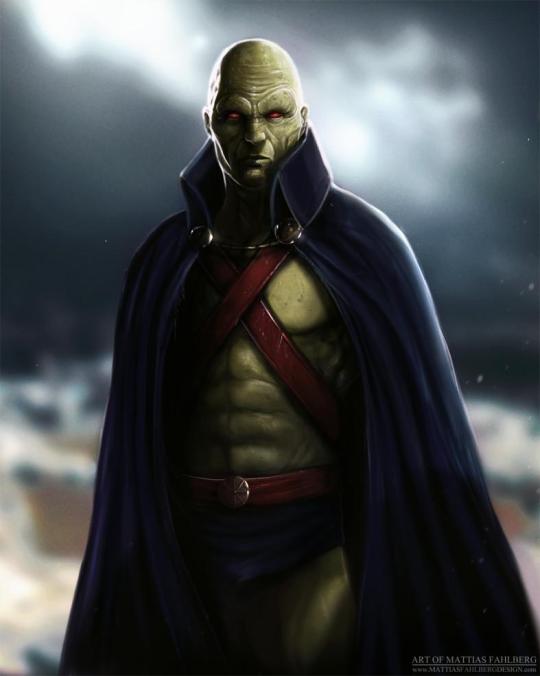
Real Name: J’onn J’onzz
Aliases:
Fernus
John Jones
Bronze Wraith
Bloodwynd
El Hombre Verdad
Charley Dimes
Isobel de la Rosa
Jade Warrior
Joan J'onnz
Marco Xavier
Secretary of State Kakalios
William Dyer
Yuchiro Takata
Hino Rei
Goldie Johnson
Josh Johnstone
Mrs. Klingman
a cat
Nathaniel Mackelvany
Paris Jackson
Officer Mike Sherman
Officer Perez
Lora Denton
Gender: Male
Height: 6′ 7″
Weight: 300 lbs (136 kg)
Eyes: Red
Hair: Bald
Skin: Green
Race: Martian
Powers:
Martian Physiology
Abilities:
Genius Level Intellect
Investigation
Multilingualism
Meditation
Weaknesses:
Vulnerability to Fire
Chocoholism
Equipment:
Kuru pendant
Base of Operations:
Mobile
The Astral Plane
Mars
Middleton, Colorado
Denver, Colorado
Detroit, Michigan
Z'Onn Z'Orr
JLA Watchtower
Universe:
Earth-One
New Earth
Origin: Martian survivor living on Earth as a superhero.
Parents:
M’yrnn J’onzz; father
Sha’sheen J’onzz; mother
Marital Status: Widowed (M’yri’ah; wife)
Citizenship: American
Occupation:
Adventurer
Detective
First Appearance: Detective Comics #225 (November, 1955)
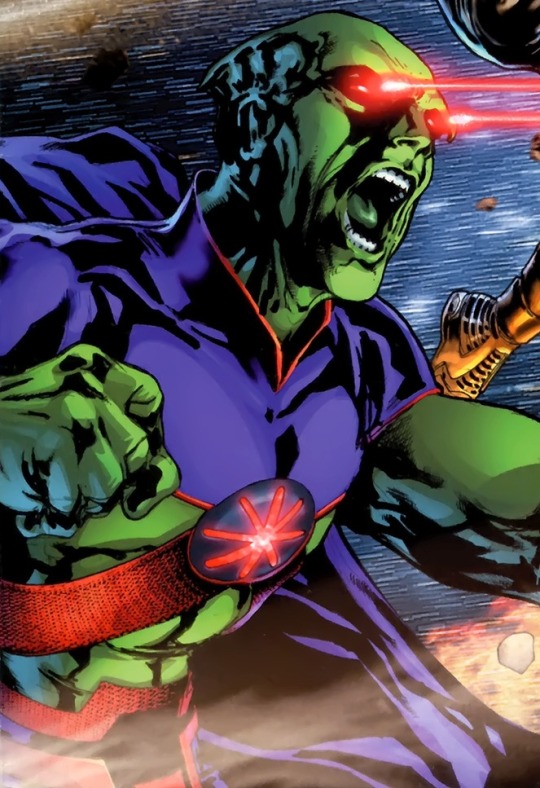
Powers
Martian Physiology: Martian Manhunter has been described as "the Swiss Army knife of superheroes." His powers come from his alien physiology. Born on Mars over a millennium ago, from a super advanced civilization, boasting advanced technology and genetic modifications over its people, the Martian Manhunter would appear to be a genetically modified being with incredible powers stemming from the changes made in his body. Whether this is their natural state or an advanced state given to only a few individuals is unknown. The Martian's physiology would seem to be composed of a complex molecular chain that resembles polymer bonds but with the ability to be altered at will. The Martian Manhunter can change his mass, color, relative shape, imitating even clothing if desired. The biopolymer is extremely flexible, durable, incredibly strong for a biological material and apparently self-sustaining. It is unknown if the Martian Manhunter actually needs to eat or not but he has been seen consuming food, particularly "Chocos," a brand of cookies.
Shape-Shifting, Malleability, Plasticity, Elongation: Arguably one of the most incredible powers possessed by the Manhunter is the ability to shape-shift. He is able to literally control the molecular structure of his body's biopolymers and manipulate them into any construct he desires, in addition to and including his own body. He can form clothing and weapons with non-moving or non-functioning parts. There does not seem to be any limit to the number of people the Manhunter can imitate and has stood in as a double for many famous people. His ability to imitate people and their mannerisms has stood him in good stead for his disguises. He has recently been seen to shape-shift into the size and shape of a common house fly and to enormous sizes comparable to skyscrapers. He is also able to change colors and turn himself into objects.
Invisibility: The Manhunter can cause the biopolymers in his body to lose their ability to reflect light, rendering the Manhunter invisible to normal light and human sight. With more increased concentration, he can render himself completely invisible along the electromagnetic spectrum, including the infrared and the ultraviolet ranges of the spectrum. This invisibility does not affect every other sense and he could still be detected by touch.
Phasing: The Manhunter can phase through solid matter. No explanation of this power has been given, but it might possibly be an aspect of his psionic powers, perhaps shifting his mass into another dimension or out of vibrational phase with other objects in this dimension. Since it is known that he can alter the density of his biopolymers, it may be that he can simply become less substantial than solid matter, thereby decreasing the molecular density of his body by loosening the bonds within the biopolymers, due to - and further demonstrating - the absolute control he has over them.
Superhuman Durability: The biomorphic structure of the Manhunter's body allows him to absorb almost all kinetic energies such as high caliber bullets, shrapnel, or flying debris easily. He can harden his biopolymers by rebinding them and increase his durability. Along with his nigh-invulnerability, his shape shifting makes him even more difficult to harm. Hazardous environments practically do not affect the Martian Manhunter. In addition, Martian Manhunter's immune system protects him from all toxins and diseases.
Superhuman Strength: The Martian Manhunter is one of the strongest beings on the planet. The Martian's superhuman strength comes from his Biomorphic structure formed from immensely long and complex molecular chains, augmented with his psionic and telekinetic abilities allowing him to lift incredible weights without these weights crumbling under the stress. By modifying the density of these biopolymers, the Manhunter can make himself stronger by forcing them into tighter bundles. While at a resting state the limits of his strength are unknown, the Manhunter can lift 100 tons without much effort.
Superhuman Stamina: J'onn's endurance is just as formidable as his strength and invulnerability. He can operate under extreme conditions for an indeterminate period of time without showing signs of fatigue. The exact range of this power is unknown.
Regeneration: The Martian Manhunter has shown amazing regenerative capabilities. So great are they that he has been able to completely regenerate from nothing but his severed hand, regenerate in moments from nothing more than a puddle of green liquid, and in another instance, survived beheading.
Flight: The Martian Manhunter flies by manipulation of gravitons, manipulation of magnetic fields and control of his absolute molecular movement. These combine to give him the ability to fly great distances with little fatigue and at great speed. The Manhunter has also been seen flying in space with no difficulty. J'onn can therefore fly at speeds exceeding the escape velocity of earth under his own power.
Superhuman Speed: Either through flight or natural movement, the Martian Manhunter can maintain speed and demonstrates reflexes far in excess to that of most metahumans, and for far longer. Like the power of flight, this is accomplished by manipulating the magnetic fields of energy surrounding his body, as well as ambient gravitational particles. Traditionally, J'onn only uses his superhuman speed while flying. He can process thoughts, move, and react at super speed as well. J'onn has also demonstrated that he is fast enough to comfortably catch bullets and other exceedingly fast projectiles.
Extrasensory Input: J'onn possesses nine different senses. One of these senses could account for instances of the Manhunter's perceived precognitive abilities.
Longevity
Super Hearing
Super-Breath: The inner valves and chambers inside the Martian Manhunter's air canals are very dense and greatly enhanced, allowing him to create strong hurricane force winds just by exhaling pressurized air from his lungs in an incredibly strong burst.
Enhanced Senses
Martian Vision: The actual nature of this power seems to vary depending on the reports. It has been seen to be a bolt of force, directed by the Manhunter's eyes causing considerable damage. It has also been seen to cause flammable objects to catch fire. It also grants J'onn the ability to see into other spectrums of light. J'onn can use his Martian vision to see people and objects that are invisible to others.
Electro-Magnetic Spectrum Vision
Telescopic Vision
Microscopic Vision
Heat Vision
Telepathy: The Martian Manhunter is the most powerful telepath on the planet, and is one of the strongest telepathic beings in the Universe. He is able to read the mind of any human with no difficulties, and the only minds that can cause him trouble are insane minds. He can even read the subconscious mind as well. He is able to read minds over great distances and has been known to scan the mind of every person on Earth within a matter of moments. This telepathy extends to distances as far away as the moon, since it is known that the Martian Manhunter can telepathically communicate with someone on Earth while on the moon. It is not known whether there is any limit to the number of people he can be attuned to or whether there are any special requirements to being attuned to him. In addition to reading minds, the Martian Manhunter has a multitude of other telepathic capabilities, one of which allows him to literally reprogram the mind of a subject into believing whatever he wants them to. He can use this ability to help subjects forget things that he does not want them to remember as well as set up post-hypnotic suggestions.
Illusions
Possession
Astral Projection
Mind Control: The Martian Manhunter can also control other beings mind's. Insane minds seem to be the only minds he has some trouble controlling.
Telepathic Relay: Otherwise known as a telepathic link. The Manhunter is able to use his telepathic prowess as a relay station for a group of minds, who can then "speak" to each other through him. This relaying ability seems to be limited to the same range as the Manhunter's normal telepathic range.
Telepathic Assault: The Martian Manhunter can also use his telepathic abilities in an offensive manner. He has the ability to cause mental shutdown in a target using his psionic powers. The Manhunter does not use this power often due to the invasive nature and harshness of such a telepathic attack.
Thought Sensing: The Manhunter can use the mental signature of a being to track it, and can detect life forms by their empathic as well as telepathic signatures. He can detect whether a being is intelligent or not, and can communicate with it empathically if it does not have a communication-driven frame of reference with which normal telepathy may function. He can also detect various states of mind from anywhere in the world.
Mayavana: One of the most prized abilities of the Martians is Mayavana. It is the ability to reach into another mind and create a mental reality as real as any normal reality. The strain of Mayavana is such that it can only be used once in a lifetime, and so is normally used on the one that a Martian loves the most.
Telekinesis: J'onn possesses the ability to move objects with his mind, which he described as ""molecular hypnosis" and "Martian mind-over-matter".

Abilities
Genius Level Intellect: The Martian Manhunter possesses highly advanced reasoning and logic capabilities, and uses them to great effect. The Martian Manhunter's particularly astute reasoning capabilities and long-term association with Earth's global population gives him an edge in dealing with humans of diverse governments, cultures and religions.
Investigation
Multilingualism
Meditation: Martians enter a meditative state as a form of sleep.

Weaknesses
Vulnerability to Fire: The Martian Manhunter has a psychosomatic fear of fire. The Guardians of the Universe have built in a fear of fire when they first confronted the Burned. Exposure to fire, causes him to lose his powers, and in the case of extreme fire, to lose his control over his biomorphic form. The Manhunter is more vulnerable in this form and can take damage in this vulnerable state.
Chocoholism: It has also been suggested that something within J'onn's physiology makes him addicted to the chemicals used in the Earth snack, Chocos. Withdrawal symptoms include violent bursts of rage and loss of intellect. However, these claims have never been accurately substantiated, and may even be false.

Equipment
Kuru pendant: The Martian Manhunter owns one of two Kuru pendants. The pendant acts as a repository of ancient Martian lore and knowledge. The second pendant belonged to the late Martian, Roh'kar.

Personality
Like all Martians, J'onn has a somewhat cold and stoic demeanor. He has very restricted emotional expressions. J'onn typically acts as the voice of reason in the Justice League and is one of the wisest leaders within the hero community, along with Batman and Superman.
Despite his cold exterior, J'onn is one of the kindest and most noble heroes operating on earth. The Manhunter has demonstrated enormous willpower, as evidenced by his ability to retain his sanity after the death of his race. He has a subtle sense of humor and an affinity for the chocolate cookie sandwiches called Chocos. The Martian Manhunter is considered by many to be the heart and soul of the Justice League.
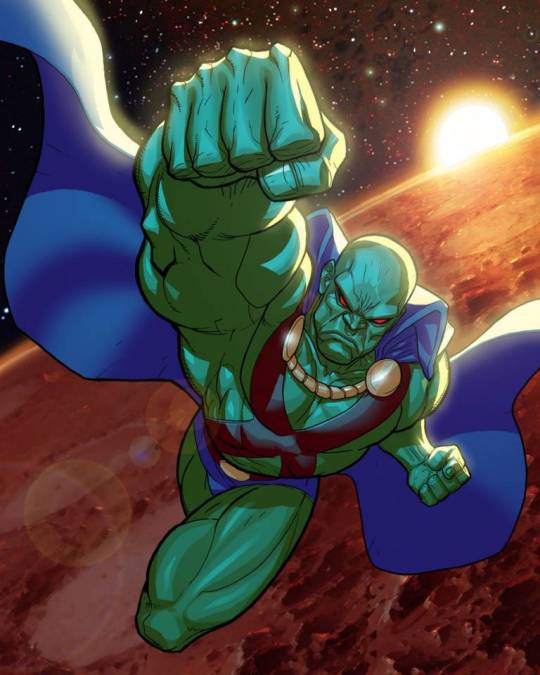
Origin
Centuries ago on the planet Ma'aleca'andra, the Green Martians known as M'yrnn and Sha'sheen gave birth to twin sons. The bearing of twins was uncommon among the Martian culture, and as such, the first of the twins was named J'onn J'onzz, whose name means "Light to the Light." J'onn's brother, however, was born a mutant, bereft of a Martian's innate ability to communicate telepathically. He was named Ma'alefa'ak, whose name means "Darkness in the Heart."
As an adult, J'onn became a Manhunter and married a Martian woman named M'yri'ah. The two established a modest home for themselves beneath the windswept Martian plains and gave birth to a daughter named K'hym.
Years passed, and J'onn's brother Ma'alefa'ak grew to despise everything about Martian culture. In an ambitious endeavor to commit full-scale genocide against his own people, he engineered a contagious virus known as H'ronmeer's Curse. The virus reacted to telepathic energy and carried from one Martian to the next whenever they elected to use their psionic powers. The plague responded to a Martian's innate fear of fire, causing them psychosomatic stress so intense, that their bodies and minds would literally burst into flame. J'onn desperately tried to keep his wife and daughter from using their mental gifts, but they were unable to do so, and thus ultimately contracted the virus. K'hym was the first to experience the symptoms, and M'yri'ah followed soon after. J'onn was anguished as he watched his family burning to death before his very eyes. The trauma of the event shattered his psyche, and nearly drove him mad.

Welcome to Earth
Meanwhile, on the planet Earth, a would-be scientist named Dr. Saul Erdel developed a transmitter machine based upon ancient Martian technology. Seeking to make contact with extraterrestrial life, he aimed his device towards the vicinity of Mars and activated it. The transmitter beam streaked across both space and time, striking the Martian Manhunter at a point in time several centuries before Erdel would even be born. The beam brought J'onn back to Erdel's natural time era, where he collapsed on the ground outside of the doctor's Colorado laboratory.
Erdel brought the distraught Martian inside and attempted to nurse him back to health. The anguish of J'onn's mental state created a psychic bond between the two, and Erdel became aware of the events that took place on Mars. In an effort to heal J'onn's mind, Erdel used the mental link to fabricate a new history for the Martian. He created a back-story inspired by the writings of famous science fiction novelists such as Ray Bradbury and Edgar Rice Burroughs. Eventually, J'onn's sanity was restored, and he was prepared to function in this strange, new world. Erdel put the idea into his head that he should become a great champion, and thus J'onn adopted the heroic guise of the Martian Manhunter.
When J'onn shapeshifted into a human-like form, Erdel was shocked and suffered a heart attack that killed him. As he was dying, Erdel asked J'onn for forgiveness for making him a prisoner of Earth.
It was later revealed that Mars was dead when J'onn was taken, killed by a mental plague deliberately started by his brother Ma'alefa'ak. He took the identity of the Bronze Wraith, and fought crime with the Justice Experience.

John Jones, Police Detective
J'onn was able to use his powers to fit into human society. He adopted a human appearance and called himself "John Jones." He became a police detective in the city of Middleton. For a long time, he worked as a policeman while secretly using his alien powers to solve cases and help people.
Some time later, the existence of the Martian Manhunter was accidentally revealed. From this point on, J'onn stopped hiding his superhero feats from the world, but he kept his double-identity as John Jones secret. It was at this time that he began to publicly appear in his green-skinned humanoid form.
He subsequently acquired policewoman Diane Meade as his partner, and an pet Zook who helped him solve cases.
J'onn J'onzz was one of the founding members of the Justice League of America.
J'onn's career as a police detective was ended by the Idol Head of Diabolu. This evil statue expelled a deadly cloud. John Jones saved a child from the cloud, but in doing so he was engulfed by it. His fellow policemen believed he must have died. J'onn took this as an opportunity to abandon his double life. He allowed the police department to believe he had died, and as the Martian Manhunter he even attended his own funeral.

Martian Manhunter Without John Jones; Justice League of America
After this, J'onn J'onzz and Zook began a quest to combat the Idol Head of Diabolu, which they finally managed to destroy.
J'onn then briefly assumed the alias "Marco Xavier" in order to infiltrate the international crime cartel known as VULTURE.
J'onn served as a regular member of the Justice League of America. However, when a group of evil Martians led by General Blanx destroyed the surface of Mars, forcing all the good Martians to flee in a rocket, J'onn accompanied them into space, leaving the Justice League.
Over the next few years J'onn was rarely seen, but he occasionally showed up to help the JLA. Eventually he returned to the JLA full-time.
When the original Justice League of America disbanded, J'onn became the leader of the new "Justice League Detroit". He remained with that team until it, too, disbanded.

Justice League International
J'onn was one of the founding members of the Justice League International.
J'onzz revealed that his familiar appearance is not his true Martian form but a "compromise" between his true form and a human appearance - explaining that his real form is private and that, even on Mars, his "public" appearance was the familiar version.
In addition to serving in the League under his own identity, he also joined as "Bloodwynd."

JLA
The Martian Manhunter is the most recognized hero in the Southern Hemisphere, and he maintains a number of different secret identities, many of them outside the United States. However, following two incidents, he decides to focus on his original human identity and retire the others.
Later, the Martian Manhunter attempts to conquer his fear of fire and makes a deal with a flame-wielding villainess named Scorch, who wants J'onzz' telepathic help in dealing with her own mental issues. 20,000 years before, an extremely dangerous race of beings called "the Burning" caused large fires to help themselves reproduce asexually. In order to prevent the Burning from destroying much of the universe, the Guardians of the Universe split the species into the Green Martians and the White Martians, changed their reproductive behavior, and instilled in them a fear of fire. When the Martian Manhunter confronts his fear of fire, he reverts into one of the ancient creatures and changes his name to Fernus. His genetic memory identifies threats such as Vandal Savage, who killed one of the Burning on ancient Earth. This same genetic memory also makes Fernus hate the Green Lantern, due to his association with the Oans.
Fernus increases the strength of the powers he inherits from J'onn: For example, he can phase other beings rather than just himself, and he has access to pyrokinesis. He can breathe fire of such intensity that it harms Scorch, who had previously been thought immune to damage from fire. Fernus' tremendous strength also allows him to dominate the Justice League in combat even without his Martian telepathic powers. He can also heal himself from almost total destruction within seconds.
The Justice League eventually defeats Fernus by re-enlisting Plastic Man, who is immune to Fernus' psychic powers and has superior shape-changing abilities. It is implied that Batman recruited Plastic Man to the Justice League as a balance in case the Martian Manhunter ever got out of control.
After destroying Fernus, J'onn grieves for Scorch, who had fallen into a coma, and with whom he had fallen in love. J'onn later tells Superman that his aversion to fire has changed: he is now invulnerable to flames unless they are "flames of passion" or of some other "psychic significance."
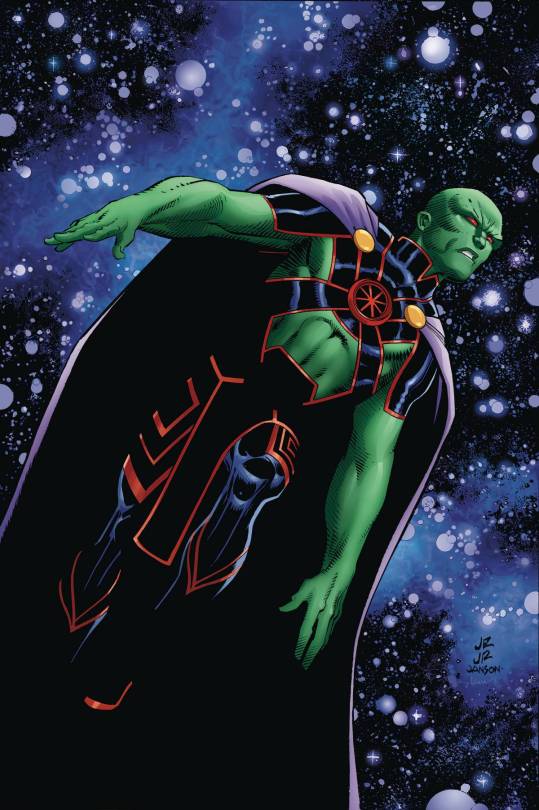
Infinite Crisis and "One Year Later"
Although J'onzz is initially thought killed in the explosion of the Justice League Watchtower, Justice League member Manitou Dawn receives a telepathic vision of J'onzz assuring her that he "will reveal himself in time," but needs her help to keep an eye on a mysterious, newly-powerful telepath - the mind-controlling villain, Key - whose abilities he had always managed to dampen before.
J'onzz resurfaces during Infinite Crisis, unconscious and connected to Alexander Luthor, Jr.'s vibrational tower, along with Lady Quark, the Ray, Black Adam, Power Girl, Nightshade, and Breach. Wonder Girl, Superboy, and Nightwing free J'onzz and the others from Alexander's tower.
Oracle asks J'onzz to telepathically coordinate the heroes' response to the Society's global jailbreak. He joins the assembled heroes in the defense of Metropolis from the combined might of the world's super-villains and in the battle against Superboy-Prime.
In the following months, J'onn masqueraded as U.S. Secretary of State Kakalios in an attempt to bring down Checkmate. He was successful in eliminating it as a U.S. government-controlled agency. However, it soon reorganized under the United Nations.
One of the most dramatic changes in J'onn's life occurred a short time later. While operating under the guise of William Dyer, he discovered that several Green Martians had crash-landed on Earth, and were being held by high-ranking members of the Defense Department. One of the Martians, Roh'kar, broke free of his confinement and made contact with the Martian Manhunter. The union was bittersweet, however, as a brainwashed assassin ended Roh'kar's life with a weapon designed to target Martians. J'onn found five of Roh'kar's colleagues and rescued them from the bowels of a government think tank. He established a safe house for them and pledged to do everything in his power to keep them safe from government scrutiny.

Salvation Run and Final Crisis
When Checkmate decided to capture a number of super-villains and exile them on a "prison planet" in an event known as Salvation Run, J'onn volunteered to disguise himself as Blockbuster and infiltrate the planet to keep an eye on things, making periodic reports to Batman. Catwoman finds out his true identity and, to save her own skin, outs him to the other villains, who torture him. When the villains escape the planet, teleporting back to Earth, they leave J'onn in his cage to die.
He is "rescued" by Libra and the new Secret Society of Super-Villains who open a Boom Tube between the planet and Earth. Libra brings him back to Earth with the express purpose of killing him, doing so with his spear tipped scale staff, for the Human Flame to show the Society members that he can give them their hearts desire--Human Flame having wanted J'onn dead for foiling a crime of his years ago. In his final moments J'onn broadcast a telepathic message to fellow heroes Batman, Superman, Green Lantern Hal Jordan, Gypsy, and Black Canary prompting them to say his name and, hours after his death had been discovered, simultaneously record part of his life story in their sleep.
His remains were interred in a pyramid removed from Egypt and placed back in its original location on Mars in a ceremony attended by many heroes. He was eulogized by Superman.

The Blackest Night
During the events of the Blackest Night, the dead rose across the universe and J'onn was one of them. After his resurrection and admission to the Black Lantern Corps, he went to confront Barry Allen and Hal Jordan, who were talking over Batman's grave being robbed. He approaches them saying that they should be dead and begins to fight the two, and is soon joined by Black Lanterns Elongated Man, Sue Dibny, Firestorm, Hawkman, and Hawkgirl. When the Atom arrives, Barry and Hal create a fire tornado to destroy J'onn. This fails to stop him, and the heroes are cornered until Indigo-1 and another Indigo Lantern arrive to drive them off. At the end of the Blackest Night, J'onn is revived by the Entity along with other heroes and a few villains. When Superman asks if J'onn is truly alive, J'onn responds, "It appears so."
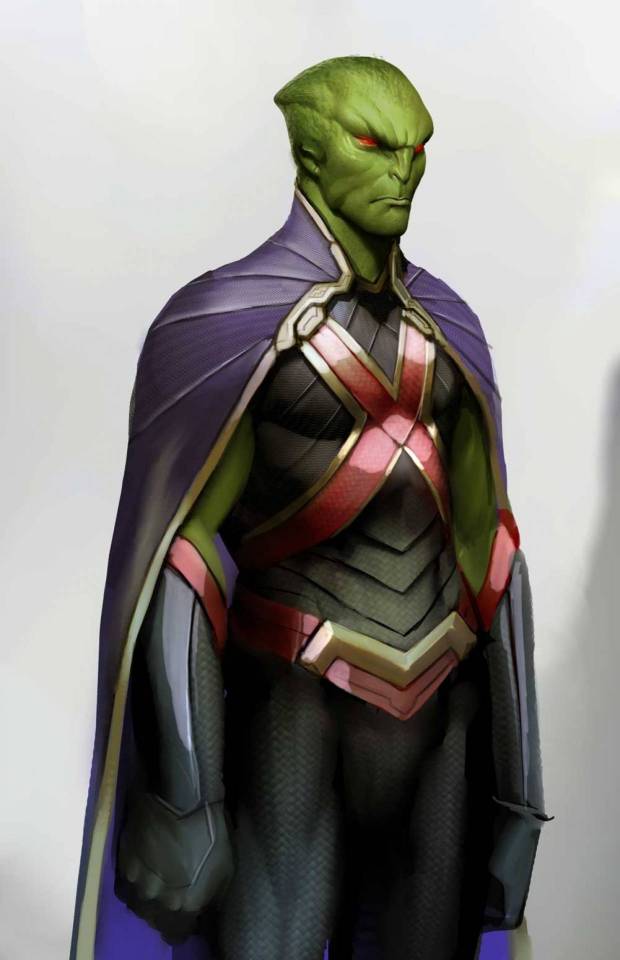
Brightest Day
J'onn is a very prominent member, finding a water source on Mars and seen talking with the daughter of Doctor Erdel. J'onn was seen last tucking her into bed in a retirement home, in the form of her father. J'onn then visited the doctor's laboratory, but plant life around him starts to die every time he gets near. He later went to see M'gann M'orzz in Australia during her mediation search, but found her beaten and tied up. While tending to her, he is contacted by the Entity, who instructs him to burn down the newly-formed forest. When J'onn's asks M'gann who did this to her, M'gann says she was attacked by a female green Martian. J'onn presumes the forest he is to burn down is in Star City but is questioned by Green Arrow. He attempts to burn down the forest before being telepathically attacked by the Entity. The Entity reveals to him that the newly-formed forest he is to burn down is on Mars. After J'onn lashed out the Star City's forest, he starts to return home.
When J'onn enters his home, he is confronted by a female green Martian named D'Kay D'Razz, who is the one responsible for M'gann's attack. D'kay explains her origins and wants to be his mate. J'onn refuses, learning she is a psychopath when D'kay angrily lashes out to attack and enters his mind. J'onn tries to resist influence from D'kay's mind, but her control over his mind tempts him with visions of a fantasy world where all the Martians and J'onn's family are resurrected by the Entity. While reunited with his lost family, J'onn discovers that they are false and realizes that they are a ruse and the death corpse is carved of Martian symbols of love and hate from D'kay's influence. J'onn arrives vengeful and wrings D'kay's neck in disgust. J'onn defeats D'kay by forcing her into the sun but is saved from the same fate by the White Lantern Entity, who informs him that his mission has been accomplished, and returns his life to him. The Entity then told J'onn to choose between Mars and Earth. J'onn chose Earth and returned only to be absorbed into the Earth by the Entity and Deadman as "part of the plan."
When the "Dark Avatar," made his presence known, Martian Manhunter is revealed to be one of the four Elementals, the others being Aquaman, Firestorm, Hawkman and Hawkgirl. He becomes the element of Earth to protect the Star City forest from the "Dark Avatar," which appears to be the Black Lantern version of Swamp Thing. The Elementals are then fused with the body of Alec Holland in order for him to be transformed by the Entity into the new Swamp Thing and battle against the Dark Avatar. After the Dark Avatar is defeated, Swamp Thing brought Martian Manhunter and the other Elementals back to normal. Afterward, J'onn helps Melissa Erdel and removes the piece of machinery from her head that made her lose her mind.
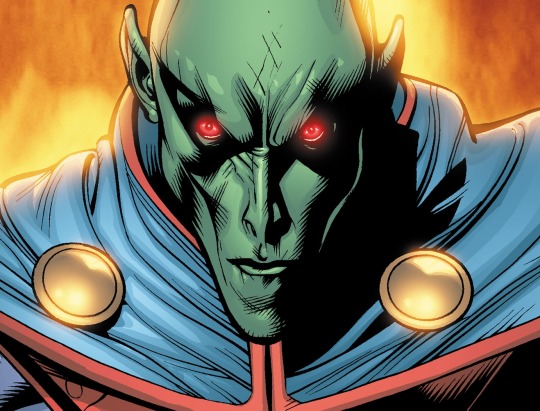
Fun Facts
Although obviously alien in appearance, the form that most Earthlings associated with the Martian Manhunter is not actually his true form. In his natural state of being, J'onn has a slender body, with sharp, angular features and a tapered cranium. The more muscular "beetle-brow" appearance was inspired by Saul Erdel, who convinced J'onn to assume a form derived from the literary works of science fiction authors such as Edgar Rice Burroughs and Ray Bradbury.
Batman left one Choco on his casket.
In his earliest appearances, the Martian Manhunter resembled a normal human, albeit with green skin. He was drawn with standard human eyes and eyebrows. In later years however, creators decided to give J'onn a more alien appearance and provided him with the more modernized beetle-brow look.
In some of his earliest adventures, the Martian Manhunter possessed the ability to see into the near future. However, there have been scant examples of this, and it is no longer a power that he possesses in modern continuity. By his own account, the Martian Manhunter cannot perceive the future.
#martian manhunter#j'onn j'onzz#fernus#john jones#bronze wraith#bloodwynd#el hombre verdad#justice league of america#jla#outsiders#justice experience#stormwatch#storm watch#justice league task force#jltf#justice league international#jli#white lantern corps#black lantern corps#dc#dc comics#thedcdunce
10 notes
·
View notes
Text
Frankie Lymon
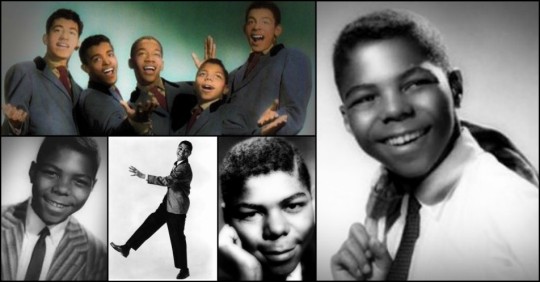



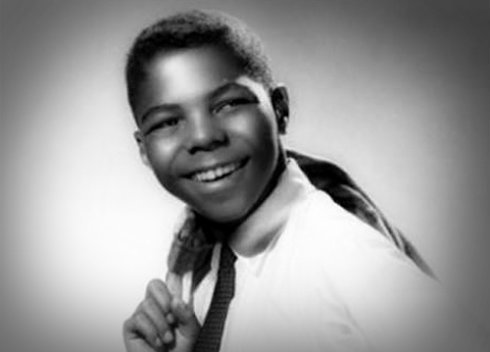

Franklin Joseph (Frankie) Lymon (September 30, 1942 – February 27, 1968) was an American rock and roll/rhythm and blues singer and songwriter, best known as the boy soprano lead singer of the New York City-based early rock and roll group The Teenagers. The group was composed of five boys, all in their early to mid-teens. The original lineup of the Teenagers, an integrated group, included three African-American members, Frankie Lymon, Jimmy Merchant, and Sherman Garnes; and two Puerto Rican members, John Seda and Douglas Seda.
The Teenagers' first single, 1956's "Why Do Fools Fall in Love," was also its biggest hit. After Lymon went solo in mid-1957, both his career and that of the Teenagers fell into decline. He was found dead at the age of 25 on the floor of his grandmother's bathroom from a heroin overdose. His life was dramatized in the 1998 film Why Do Fools Fall In Love.
Early years: joining the Teenagers
Frankie Lymon was born in Harlem, New York on September 30, 1942 to Howard and Jeanette Lymon. Howard worked as a truck driver and Jeanette worked as a maid. Howard and Jeanette Lymon also sang in a gospel group known as the Harlemaires; Frankie and his brothers, Lewis and Howie, sang with the Harlemaire Juniors (a fourth Lymon brother, Timmy, was a singer, though not with the Harlemaire Juniors). The Lymons struggled to make ends meet, so, at age 10, Lymon began working as a grocery boy.
At the age of 12 in 1954, Lymon heard a local doo-wop group known as the Coupe De Villes at a school talent show. He became friends with the lead singer, Herman Santiago, and he eventually became a member of the group, now calling itself both The Ermines and The Premiers. Dennis Jackson of Columbus, Georgia, was one of the main influences in Lymon's life. His personal donation of $500 helped start Lymon's career.
One day in 1955, a neighbor gave The Premiers several love letters that had been written to him by his girlfriend, with the hopes that he could give the boys inspiration to write their own songs. Merchant and Santiago adapted one of the letters into a song called "Why Do Fools Fall in Love". The Premiers, now calling itself The Teenagers, got its first shot at fame after impressing Richard Barrett, a singer with The Valentines. Barrett, in turn, got the group an audition with record producer George Goldner. On the day of the group's audition, Santiago, the original lead singer, was late. Lymon stepped up and told Goldner that he knew the part because he helped write the song. The disc jockeys always called them "Frankie Lymon and the Teenagers".
Life and career
"Why Do Fools Fall in Love": fame and success
Goldner signed the group to Gee Records, and "Why Do Fools Fall in Love" became its first single in January 1956. The single peaked at No. 6 on the Billboard pop singles chart, and topped the Billboard R&B singles chart for five weeks.
Six other top blues 10 singles followed over the next year or so: "I Want You to Be My Girl", "I Promise to Remember", "Who Can Explain?", "Out in the Cold Again", "The ABC's of Love", "I'm Not a Juvenile Delinquent", and "Baby Baby" were also popular Teenagers releases. "I Want You To Be My Girl" gave the band its second pop hit, reaching No. 13 on the national Billboard Hot 100 chart. "Goody Goody" (written by Matty Malneck and Johnny Mercer and originally performed by Benny Goodman) was a No. 20 pop hit, but did not appear on the R&B chart. The Teenagers placed two other singles in the lower half of the pop chart.
With the release of "I Want You To Be My Girl", the group's second single, The Teenagers became Frankie Lymon & the Teenagers. An album, "The Teenagers Featuring Frankie Lymon", was released in December 1956.
Going solo
In early 1957, Lymon and the Teenagers broke up while on a tour in Europe. During an engagement at the London Palladium, Goldner began pushing Lymon as a solo act, giving him solo spots in the show. Lymon began performing with backing from pre-recorded tapes. The group's last single, "Goody Goody" backed with "Creation of Love," initially retained the "Frankie Lymon & the Teenagers" credit, but they were actually solo recordings (with backing by session singers). Lymon had officially departed from the group by September 1957; an in-progress studio album called Frankie Lymon and the Teenagers at the London Palladium was instead issued as a Lymon solo release.
As a solo artist, Lymon was not nearly as successful as he had been with the Teenagers. Beginning with his second solo release, "My Girl", Lymon had moved to Roulette Records. On a July 19, 1957, episode of Alan Freed's live ABC TV show The Big Beat, Lymon began dancing with a white teenage girl while performing. His actions caused a scandal, particularly among Southern TV station owners, and The Big Beat was subsequently canceled. There is no surviving footage of this, because the episode was taped over. This is according to Judith Fisher Freed.
Lymon's slowly declining sales fell sharply in the early 60s as his voice changed from his signature tenor to a much deeper baritone as a result of his heroin use within the span of one year. His highest charting solo hit was a cover of Bobby Day's "Little Bitty Pretty One", which peaked at No. 58 on the Hot 100 pop chart in 1960 and which had been recorded in 1957. Addicted to heroin since the age of 15, Lymon fell further into his habit, and his performing career went into decline. According to Lymon in an interview with Ebony magazine in 1967, he was first introduced to heroin when he was 15 by a woman twice his age. In 1961, Roulette, now run by Morris Levy, ended their contract with Lymon and he entered a drug rehabilitation program.
After losing Lymon, the Teenagers went through a string of replacement singers, the first of whom was Billy Lobrano. In 1960, Howard Kenny Bobo sang lead on "Tonight's the Night" with the Teenagers; later that year, Johnny Houston sang lead on two songs. The Teenagers, who had been moved by Morris Levy to End Records, were released from their contract in 1961. The Teenagers briefly reunited with Lymon in 1965, without success.
Later years
Over the next four years, Lymon struggled through short-lived deals with 20th Century Fox Records and Columbia Records. Lymon began a relationship with Elizabeth Mickey Waters, who became his first wife in January 1964 and the mother of his only child, a baby girl named Francine who died two days after birth at Lenox Hill Hospital. Lymon's marriage to Waters was not legal, because she was still married to her first husband. After the marriage failed, he moved to Los Angeles in the mid-1960s, where he began a romantic relationship with Zola Taylor, a member of the Platters. Taylor claimed to have married Lymon in Mexico in 1965, although their relationship ended several months later, purportedly because of Lymon's drug habits. Lymon, however, had been known to say that their marriage was a publicity stunt and Taylor could produce no legal documentation of their marriage. In Major Robinson's gossip column of June 6, 1966, Zola said the whole thing was a joke that she went along with at the time (October 1965).
He appeared at the Apollo as part of a revue, adding an extended tap dance number. Lymon recorded several live performances (such as "Melinda" in 1959), but none rose on the charts. His final television performance was on Hollywood a Go-Go in 1965, where the then-22-year-old singer lip-synched to the recording of his 13-year-old self singing "Why Do Fools Fall in Love." The same year, Lymon was drafted into the United States Army and reported to Fort Gordon, Georgia, near Augusta, Georgia, for training. While in the Augusta area, Lymon met and fell in love with Emira Eagle, a schoolteacher at Hornsby Elementary in Augusta. The two were wed in June 1967, and Lymon repeatedly went AWOL to secure gigs at small Southern clubs. Dishonorably discharged from the Army, Lymon moved into his wife's home and continued to perform sporadically.
Traveling to New York in 1968, Lymon was signed by manager Sam Bray to his Big Apple label, and the singer returned to recording. Roulette Records expressed interest in releasing Lymon's records in conjunction with Big Apple and scheduled a recording session for February 28. A major promotion had been arranged with CHO Associates, owned by radio personalities Frankie Crocker, Herb Hamlett and Eddie O'Jay. Lymon, staying at his grandmother's house in Harlem where he had grown up, celebrated his good fortune by taking heroin; he had remained clean ever since entering the Army three years earlier.
Death
On February 27, 1968, Lymon was found dead of a heroin overdose at the age of 25 on the floor of his grandmother's bathroom. Lymon, a Baptist, was buried at Catholic Saint Raymond's Cemetery in the Throggs Neck section of The Bronx, New York City, New York.
"I'm Sorry" and "Seabreeze", the two songs Lymon had recorded for Big Apple before his death, were released later in 1968.
Posthumous troubles
Lymon's troubles extended to others after his death. After R&B singer Diana Ross returned "Why Do Fools Fall in Love" to the Top Ten in 1981, a major controversy concerning Lymon's estate ensued. Zola Taylor, Elizabeth Waters and Emira Eagle each approached Morris Levy, the music impresario who retained possession of Lymon's copyrights and his royalties, claiming to be Lymon's rightful widow; Lymon had neglected to divorce both Taylor and Waters. The complex issue resulted in lawsuits and counter-lawsuits, and in 1986, the first of several court cases concerning the ownership of Lymon's estate began.
Trying to determine who was indeed the lawful Mrs. Frankie Lymon was complicated by more issues. Waters was already married when she married Lymon; she had separated from her first husband, but their divorce was finalized in 1965, after she had married Lymon. Taylor claimed to have married Lymon in Mexico in 1965, but could produce no acceptable evidence of their union. Lymon's marriage to Eagle, on the other hand, was properly documented as having taken place at Beulah Grove Baptist Church in Augusta, Georgia, in 1967; however, the singer was still apparently twice-married and never divorced when he married Eagle. The first decision was made in Waters' favor; Eagle appealed, and in 1989, the Appellate Division of the New York State Supreme Court reversed the original decision and awarded Lymon's estate to Eagle.
However, the details of the case brought about another issue: whether Morris Levy was deserving of the songwriting co-credit on "Why Do Fools Fall in Love". Although early single releases of "Why Do Fools Fall in Love" credit Frankie Lymon, Herman Santiago and Jimmy Merchant as co-writers, later releases and cover versions were attributed to Lymon and George Goldner. When Goldner sold his music companies to Morris Levy in 1959, Levy's name began appearing as co-writer of "Why Do Fools Fall in Love" in place of Goldner's. Lymon was never paid his songwriting royalties during his lifetime; one result of Emira Eagle's legal victory was that Lymon's estate would finally begin receiving monetary compensation from his hit song's success. In 1987, Herman Santiago and Jimmy Merchant, both then poor, sued Morris Levy for their songwriting credits.
In December 1992, the United States federal courts ruled that Santiago and Merchant were co-authors of "Why Do Fools Fall in Love". However, in 1996 the ruling was reversed by the Court of Appeals for the 2nd Circuit on the basis of the statute of limitations: copyright cases must be brought before a court within three years of the alleged civil violation, and Merchant and Santiago's lawsuit was not filed until 30 years later. Authorship of "Why Do Fools Fall in Love" currently remains in the names of Frankie Lymon and Morris Levy.
Legacy
Although their period of success was brief, Frankie Lymon & the Teenagers' string of hits were highly influential on the rock and R&B performers who followed them. Lymon's high-voiced sound is said to be a direct predecessor of the girl group sound, and the list of performers who name him as an influence include Michael Jackson, Ronnie Spector, Diana Ross, The Chantels, The Temptations, George Clinton, Smokey Robinson, Len Barry and The Beach Boys, among others. The performers most inspired by and derivative of Lymon and the Teenagers' style are The Jackson 5 and their lead singer and future superstar Michael Jackson. Motown founder Berry Gordy based much of the Jackson 5's sound on Frankie Lymon & the Teenagers' recordings, and the Teenagers are believed to be the original model for many of the other Motown groups he cultivated.
Lymon's music and story were re-introduced to modern audiences with Why Do Fools Fall in Love, a 1998 biographical film directed by Gregory Nava, also the director of the Selena biopic. Why Do Fools Fall in Love tells a comedic, fictionalized version of Lymon's story from the points of view of his three wives as they battle in court for the rights to his estate. The film stars Larenz Tate as Frankie Lymon, Halle Berry as Zola Taylor, Vivica A. Fox as Elizabeth Waters and Lela Rochon as Elmira Eagle. Why Do Fools Fall in Love was not a commercial success and met with mixed reviews; the film grossed a total of $12,461,773 during its original theatrical run.
In 1973, Lymon became known to a slightly younger generation than before with the release of American Graffiti,, which included "Why Do Fools Fall in Love" on its soundtrack.
In September 1979 at the Santa Barbara Bowl, Joni Mitchell performed a version of "Why Do Fools Fall In Love" which subsequently appeared on the release of her album of the concert entitled "Shadows and Light" the following September. During the opening mix of the album, Joni Mitchell also spliced sections of "I'm Not A Juvenile Delinquent" into the title track refrains.
The song "Harlem Roulette" by The Mountain Goats, off its 2012 album Transcendental Youth,, contains reference to Frankie Lymon, the song "Seabreeze" and Roulette Records. Frontman John Darnielle has stated that the song is about the last night of Lymon's life.
Frankie Lymon and the Teenagers were inducted into the Rock and Roll Hall of Fame in 1993, and into the Vocal Group Hall of Fame in 2000.
Lymon was mentioned in the 1992 Stephen King short story "You Know They Got a Hell of a Band". Lymon is named as the one who cut off the waitress Sissy's finger for trying to help the protagonists, Mary and Clark Willingham, escape from the town of Rock & Roll Heaven, Oregon, who is inhabited by musicians like Janis Joplin, Otis Redding, Roy Orbison, and other musicians who died young.
Discography
Frankie Lymon & the Teenagers discographySinglesGee releases
1956-01: [Gee 1002] "Why Do Fools Fall in Love" / "Please Be Mine" 1 (#1 on the R&B chart for 5 weeks)
1956-04: [Gee 1012] "I Want You to Be My Girl" / "I'm Not a Know-It-All" 2 (#3 on R&B chart)
1956-07: [Gee 1018] "I Promise to Remember" / "Who Can Explain?" (double-sided hit on R&B chart (#10 and #7))
1956-09: [Gee 1022] "The ABC's of Love" / "Share" (#8 on R&B chart)
1956-11: [Gee 1026] "I'm Not a Juvenile Delinquent" / "Baby, Baby"
1957-04: [Gee 1032] "Teenage Love" / "Paper Castles"
1957-05: [Gee 1035] "Love Is a Clown / Am I Fooling Myself Again"
1957-06: [Gee 1036] "Out in the Cold Again" / "Miracle in the Rain" 5 (#10 on R&B chart)
1957-07: [Gee 1039] "Goody Goody" / "Creation of Love" 3
1957-12: [Gee 1046] "Everything to Me" / "Flip Flop" 4
Notes
1 Released as by "The Teenagers"
² Early copies released as by "The Teenagers featuring Frankie Lymon"; billing on later pressings changed to "Frankie Lymon & the Teenagers"
³ Both sides of this release are actually Frankie Lymon solo recordings.
4 billed as "The Teenagers" (lead vocal by Billie Lobrano)
5 Released as by "The Teenagers featuring Frankie Lymon"
Album
1956: [Gee 701] The Teenagers Featuring Frankie Lymon
Compilations
1986: Frankie Lymon and the Teenagers: For Collectors Only (Murray Hill 148)
Frankie Lymon solo discographySinglesRoulette releases
1957: [Roulette 4026] "My Girl" / "So Goes My Love"
1957: [Roulette 4035] "Little Girl" / "It's Christmas Once Again"
1958: [Roulette 4044] "Thumb Thumb" / "Footsteps"
1958: [Roulette 4068] "Portable on My Shoulder" / "Mama Don't Allow It" — 4/58
1958: [Roulette 4093] "Only Way to Love" / "Melinda"
1959: [Roulette 4128] "Up Jumped a Rabbit" / "No Matter What You've Done"
1969: [Roulette 21095 ""/ "1-20-12 Forever'
Gee release
1959: [Gee 1052] "Goody Good Girl" / "I'm Not Too Young to Dream"
Roulette releases
1960: [Roulette 4257] "Little Bitty Pretty One" / "Creation of Love"
1960: [Roulette 4283] "Buzz Buzz Buzz" / "Waitin' in School"
1961: [Roulette 4310] "Jailhouse Rock" / "Silhouettes"
1961: [Roulette 4348] "Change Partners" / "So Young (And So in Love)"
1961: [Roulette 4391] "Young" / "I Put the Bomp" (featuring backing vocals by two members of The Delicates (Denise Ferri and Peggy Santiglia))
Later releases
1964: "To Each His Own" / "Teacher, Teacher" (20th Century Fox)
1964: "Somewhere" / "Sweet and Lovely" (Columbia)
1969: "I'm Sorry" / "Seabreeze" (Big Apple)
Albums
1956: Frankie Lymon And The Teenagers - 1981 Re-issue Roulette Y2-116-RO (Japan) [Gee 701]
1957: Frankie Lymon at the London Palladium (Roulette)
1958: Rock & Roll with Frankie Lymon (Roulette)
1994: Complete Recordings (Bear Family)
Wikipedia
9 notes
·
View notes
Photo










Log Cabin Day
Log Cabin Day is celebrated annually on the last Sunday of June and takes place on June 26 this year. A log cabin is a small log building with a few rooms and no electricity. It was home to Americans in a time of little sophistication and technology. Today, the mention of a cabin house prompts an image of a nice, quiet vacation away from the world of cars, traffic, and computers. Log cabins have a long history in America and today, we celebrate them.
History of Log Cabin Day
Log cabins date as far back as Medieval times in Scandinavia and Eastern Europe, where tall, straight trees were readily obtainable. A Medieval log cabin was called a chattel house and considered movable property. Villagers who were relocating dismantled their homes by taking them apart, log by log, and transporting them to a new location for reassembling.
Historians suggest that the first log cabins built on American soil were in a Swedish colony around 1640. As time passed, the American people continued to build homes with logs. These houses were solid and long-lasting, sheltering the occupants from the cold and harsh weather.
In the 19th century, the log cabin became a political symbol in America, indicating humble beginnings and something that resonated with ordinary people. About seven United States presidents were born in log cabins, including the famous Abraham Lincoln. The idea of making the log cabin a political symbol was used first in 1840 by a presidential candidate called William Henry Harrison, despite the fact Harrison was not born in such a house. It became a trend as other political candidates recognized its promotional value and continued to use the concept as a symbol for their campaigns.
Log Cabin Day was founded by the Log Cabin Society and the Bad Axe Historical Society in Michigan in 1986. The day was formalized to promote the preservation of log cabins and promote awareness and education about life during the era in America when log cabins were commonplace. Each year people go out to help preserve historical log cabins for the future and hold on to the artifacts and memories that make them so important. Their connection to nature contributes to their enduring popularity.
Log Cabin Day timeline
Middle Ages Europeans Construct Log Houses
People in Scandinavia and Eastern Europe build cabins from logs of wood.
1640 Settlers Build Log Cabins
It is thought that Swedish settlers build the first log cabins in North America.
19th Century It Becomes a Symbol
Politicians begin to use the log cabin as a political symbol indicating humble origins.
1986 Log Cabin Day Begins
A Michigan legislature resolution declares June 28 as a holiday, and the Log Cabin Society and Bad Axe Historical Society introduce Log Cabin Day.
Log Cabin Day FAQs
What is Log Cabin Day in Michigan?
The last Sunday of June of each year is Log Cabin Day in Michigan.
How long do log cabins last?
With proper maintenance, log cabins can last a lifetime or at least 20, 30, or even 50 years, and in a location that has reasonable weather conditions.
What's the best wood for a log cabin?
A good choice of wood for a log cabin is eastern white pine. It is beautiful and durable.
Log Cabin Day Activities
Rent a log cabin or go camping
Create awareness online
Check out museums with log cabins
One of the best ways to celebrate Log Cabin Day is to rent a cabin for the day. If you can’t, ask a few friends or family to join you on an overnight camping trip and have dinner around a cozy campfire.
Celebrate the day by creating awareness and educating people through your social media platforms. Share the story of log cabins in America and their historical significance.
Some museums or historical societies have log cabins in their collections, visit any of those if they are close to you. Take part in some of the special events and tours hosted by historical organizations to celebrate Log Cabin Day.
5 Interesting Facts About Log Cabins
A long-standing artifact
They originated from Europe
They are an old tradition
The largest log cabin is expensive
Home to past presidents
The oldest standing log cabin is 384 years old and has great historical value.
Log cabins originated from Northern Europe.
It is speculated that the first log cabins were built over 5,000 years ago during the Bronze Age in Europe.
The largest log cabin in the world is located in Granot Loma and costs $40 million.
About seven past American presidents were either born in or have lived for some parts of their lives in a log cabin.
Why We Love Log Cabin Day
They remind us of simpler times
We enjoy the festivals and other festivities
They help preserve the log cabin
The holiday reminds us of a period when life was simple, quiet, and rustic. We get to envision the lifestyle of our ancestors, their survival, and the part log houses played in securing that.
The log cabin event presents pleasant festivities to be enjoyed. There are parades and celebrations hosted in Michigan on this day.
People are motivated to learn about the history of log cabins and the part they can play in their preservation. Log Cabin Day helps to make this possible.
Source
#Stuga#interior#exterior#Kalaloch Beach#LogCabinDay#Log Cabin Day#last Sunday in June#26 June 2022#original photography#architecture#USA#travel#Sweden#vacation#summer 2020#2017#Sherman Station Complex#Elk#Nevada#Gothenburg#Nebraska#Pony Express Station & Museum#Overland Trail Stage Station#2019#tourist attraction#landmark#free admission#AirBnB
0 notes
Text
My First Look at Lightning 온라인사설바둑이게임주소 on Hollywoodbets
France is the country that gave birth to the standard suit system based on Diamonds, Hearts, Clubs and Spades, now used all over the world. But the same country is also the homeland of the interesting French pattern, born in the early 1800s and known as portrait officiel. Another well-known variety sprung from the latter is the Belgian-Genoese pattern, described further down in the page. https://en.search.wordpress.com/?src=organic&q=토토사이트 And Native American tribes bring casino gambling to much of the rest of the country. In addition, a backdrop of underworld ties made the nation's gambling capital a place many were wary of visiting. These machines are typically governed by the region's lottery and gaming boards, and are situated inside licensed establishments such as bars.
* Straight Flush – five numerically adjacent cards of the same suit (Example – 4, 5, 6, 7 and 8 of Diamonds). Where both the player and dealer hold a Straight Flush the hand with the highest card is considered the winner. When the player's turn comes, they place a bet equal to the original bet, and the dealer gives the player just one card, which is placed face down and is not turned up until the bets are settled at the end of the hand. A railway also passes through the commune with a station near the town and the railway line coming from Azerailles in the north-west continuing to Bertrichamps in the south-east. Casino Canberra: I have heard the Canberra Casino follows pay table 7 but also pays $50 for a "deadman's hand" consisting of AA88x, where x is any other card.
If you entered the Jackpot by placing your side bet and your hand qualifies for a payout, you win. The amount you win will be appropriate to your hand regardless of the strength of the Dealer’s hand. hese suits are also imagined to have connection with elements or wombs like Fire Air water and Earth as described by "Kate Simmons" in Why are the four suits of a standard deck of playing cards spades, hearts, diamonds and clubs? Players and the dealer will each receive five cards, and the dealer will expose their top card. After looking at their hands, each player has a choice: fold, or stay in the game by making the Raise bet of 2x their Ante. The dealer needs an Ace-King or better to qualify. If the dealer does not qualify, the player’s Ante bet automatically wins even money and their Raise bet pushes. It charges neither an upfront license fee nor a gambling tax.
Bally Technologies All American video poker is based on Jacks or Better with an increased payout for flushes, straights and straight flushes, but reduced payout for full houses and two pairs (8-8-8-3-1 versus 9-6-4-3-2). The full pay version (quads return 50 bets), once common but now rare, is one of the highest return versions of video poker offered, but the play strategy is very complex and mastered by few. IGT's version of the game is called USA Poker. If there are no progressive jackpot hands, all hands at the table are dead and the players retain their antes and bets.The player now picks up the player’s cards and must decide either to fold (surrender ante) or to bet (bet equals two times ante).Want to know more about the best gambling destinations in the world? Depending on the bet, the house advantage (“vigorish”) for roulette in American casinos varies from about 5.26 to 7.89 percent, and in European casinos it varies from 1.35 to 2.7 percent.
Each player receives 5 cards face down and the dealer receives four cards face down and one card face up. Each player can inspect their cards and decide to either Bet or Fold. To play pachinko, players get a number of metal balls by inserting cash or cards directly into the machine they want to use.The six-deck game (312 cards) is the most popular. Instead, Montagu told his servants to just bring him some meat between sliced bread so he could eat and play at the same time. Thus the "sandwich" was born... sort of.

This he did at the Casino de Madrid in Madrid, Spain, winning 600,000 euros in a single day, and one million euros in total. Legal action against him by the casino was unsuccessful, it being ruled that the casino should fix its wheel. If the roll is any other value, it establishes a point.Las Vegas World War II veteran Elmer Sherman won a shocking $4.6 million from a slot machine at the Mirage in 1989, but he wasn't content to stop there. Players may wager money against each other (playing "street craps") or a bank (playing "casino craps", also known as "table craps", or often just "craps").
It then spread through southern China during the Qing dynasty. (The casino was destroyed in 2005 by Hurricane Katrina.) The symbols were combinations of three of a number of different horses, arranged to represent a winner, a second-placed horse and a third-placed horse. (The horses were represented in three concentric rings, with the winner on the outer ring.)Casino managers are under tremendous pressure to maximize their all-important slot revenue, but they do not want to kill the golden goose by raising the “price” too much. A license to operate a new casino in otherwise virgin territory was a highly valuable item, particular if the territory had a large population.
If a player is playing don't pass instead of pass, they may also lay odds by placing chips behind the don't pass line. Once taken down or reduced, however, the don't pass bet may not be restored or increased. 우리카지노 Be sure you know the bet requirements at a particular slot machine or table game before you sit down. In casual play, the right to deal a hand typically rotates among the players and is marked by a token called a dealer button (or buck).
0 notes
Text
A New Museum Delves Into the Complex History of the U.S. Army
https://sciencespies.com/history/a-new-museum-delves-into-the-complex-history-of-the-u-s-army/
A New Museum Delves Into the Complex History of the U.S. Army

The first museum dedicated to interpreting the complex history of the United States Army opened to the public this Veteran’s Day, reports Matthew Barakat for the Associated Press.
Located on a grassy plain in Fort Belvoir, Virginia, the privately funded National Museum of the United States Army honors the service of the more than 30 million men and women who have served in the Army since its founding in 1775. A joint effort between the U.S. Army and the Army Historical Foundation, the museum has been in the works for over a decade.
The Covid-19 pandemic delayed the museum’s grand opening but allowed it to plan a rescheduled opening that coincided with Veteran’s Day. Attendance is limited, but visitors can reserve free tickets ahead of their visit online.
Highlights of the new collections include a life-size depiction of American troops storming the beaches of Normandy on D-Day and a number of artifacts from the front lines of key moments in U.S. military history: a sword from the defense of Fort McHenry in the War of 1812, a wristwatch that stopped at the moment a plane crashed into the Pentagon during the 9/11 attacks, and the American M4 Sherman tank that first breached enemy lines during the Battle of the Bulge in World War II, per the AP.
Another key attraction, a gallery titled “Army & Society,” charts the symbiotic relationship between national culture and the armed forces, as well as the technological and medical advancements that the Army has facilitated over the years.
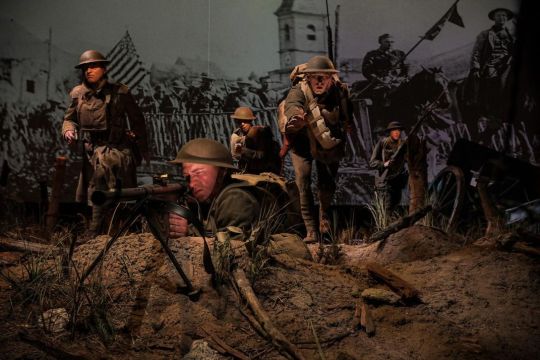
A display depicting trench warfare during World War I
(Spc. Ian Miller / National Museum of the United States Army)

This sword was used during the defense of Baltimore in 1814. It belonged to Capt. John Berry, commander of the Water Battery at Fort McHenry.
(Scott Metzler / National Museum of the United States Army)
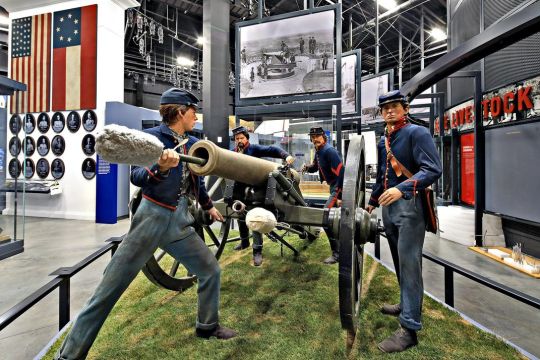
Life-size wax statues of soldiers populate many displays, including this one of Union soldiers loading a “Napoleon,” a robust bronze smoothbore named after the French emperor. The weapon was popular among Union soldiers in the Civil War for its maneuverability.
(Duane Lempke / National Museum of the United States Army)

An interior view of an exhibition at the National Museum of the United States Army
(National Museum of the United States Army)
In a statement, Secretary of the Army Ryan D. McCarthy notes that the museum hopes to emphasize the individual stories that make up Army history. He adds, “The National Army Museum will be a place for members of the total Army family to gather and share their stories, while also creating an opportunity for visitors to connect with our nation’s history through the eyes and voices of individual soldiers.”
To help fulfill this goal, metal pylons etched with portraits and biographies of soldiers are stationed throughout galleries and entryways, writes Philip Kennicott in a review for the Washington Post. Some displays, such as one depicting trench warfare during World War I, include wax-cast sculptures of soldiers. These faces are actual replicas of current Army soldiers, “down to every facial feature,” notes Victoria Chamberlin for DCist.
In addition to centering individual narratives, the museum explores the Army’s fraught legacy as an instrument of power, war and oppression. As the Post notes, Army history often goes hand in hand with the story of American imperial exploitation. In the country’s founding decades, the Army waged the protracted “Indian Wars” to forcibly remove Native Americans from their rightful tribal lands; during the Wounded Knee Massacre of 1890, the U.S. Army 7th Cavalry Regiment indiscriminately murdered hundreds of Sioux men, women and children.
In 1968, American forces in Vietnam murdered as many as 500 unarmed villagers in the Mỹ Lai massacre. And, during the Iraq War, U.S. Army and CIA officers engaged in horrific physical and sexual abuse, as well as torture, of tens of thousands of prisoners in Abu Ghraib, a U.S. military prison.
“We didn’t want to make a hallway of heroes,” Paul Morando, chief of exhibits at the museum, tells the AP.
“We don’t shy away from the more sensitive subjects the Army’s been involved in,” Morando adds. “We mention Mỹ Lai. We mention Abu Ghraib. We mention Wounded Knee. These events are put out in a factual way for the public to interpret or learn more about, but we do not ignore those subjects.”
youtube
Writing for the Post, however, Kennicott notes while these atrocities are broached in the exhibitions, they are often described in “language that is both maddeningly dispassionate and morally obtuse.”
Throughout the museum, displays detail the Army’s history of exclusion within its ranks. Black troops have participated in the Army since its inception, but the forces weren’t fully integrated until 1948, and black soldiers were long excluded from high-level positions. Exhibitions also tell of the 442nd Regimental Combat Team, a segregated unit comprised of more than 12,000 second-generation Japanese Americans who fought in World War II. At the time, the United States government was forcing Japanese Americans across the country—including some of the soldiers’ family members—into internment camps.
Women, meanwhile, were only allowed to take command positions in non-combat roles in the 1970s. And both women and men continue to report rising rates of sexual assault in U.S. military service, as Caitlin Kenney reported for Stars and Stripes this year.
Architecture firm Skidmore, Owings & Merrill designed the museum’s $200-million new home—a sleek, five-story, 185,000-square-foot building that boasts large expanses of glass and polished steel, according to the Post. Its highest level features a glass ceiling that lights up at night to represent “the light of freedom of democracy,” Susan Smullen, the museum’s public affairs officer, tells DCist.
Smullen adds, “Stainless steel represents the strength of the Army and the resiliency of the Army, but also the reflective nature of the Army as a representation of American society.”
#History
0 notes
Quote
Sherman's story of his march on the South must be one of the most articulate and engrossing ever written by an important general. It creates the appalled suspense of a kind of Grand Guignol horror, as we follow this intrepid and disciplined man, in many ways so sympathetic, going further and further in destructiveness, and recounting the process with the utmost exactitude and without the slightest compunction. The personality of Sherman was rather complex; he alternated between contradictory impulses, but he was passionate in everything he did. His love of his men was real, his devotion to his family touching. He wept when General James McPherson was killed and the news had to be communicated to the girl whom Sherman, by forbidding him furlough, had just prevented McPherson from marrying, as he had wept when he heard the news of South Carolina's secession, and he had been so much overcome by the tears of his Louisiana cadets when he had to resign from the seminary that, unable to make them a farewell speech, he had simply, an onlooker reports, "put his hand on his heart, saying 'You are all here,' wheeled on his heel" and left the room. He had very much liked the Southerners in his early days, when he was stationed in South Carolina, and the spontaneous affection toward old Southern friends which continues to manifest itself throughout the war as a natural generosity, will afterwards, in his policy toward the enemy, come to conflict with such previous expressions as the following in a letter to Sheridan, on the eve of the march to Atlanta: "The problem of war consists in the awful fact that the present class of men who rule the South must be killed outright rather than in the conquest of territory."
Edmund Wilson, Patriotic Gore
#edmund wilson#patriotic gore: studies in the literature of the american civil war#william tecumseh sherman
3 notes
·
View notes
Text
Preposterous ideas from Atlanta’s past decade that actually came true

Ponce City Market’s rooftop, like the building overall, was a more desolate place a decade ago. | Curbed Atlanta
Who could have seen this coming in 2010?
Trying to recall the Atlanta of a decade ago—when about one in 10 people were unemployed and nary a construction crane graced the sky—can seem like looking back on some other city. A more stagnant landscape. Because, in many ways, it was.
But underestimating Atlanta’s prowess for pulling itself out of ruts (thanks, Sherman) or concocting fantastically big ideas (looking at you, Coca-Cola, CNN, and the Centennial Olympics) is an exercise in foolishness. When it comes to ambition, a can-do spirit, and sometimes detrimental preposterousness, the ATL excels.
Between 2010 and today, amidst a resurgent economy, the city has witnessed preposterous ideas come to fruition that would have been inconceivable a decade ago—for better or worse.
Let’s recall a few highlights—or lowlights—as 2020 nears...
Electric scooters: changing Atlanta’s built environment and urban mobility

Contributed photo
An e-pileup in Atlanta.
Not since Hitchcock have a flock of reckless little Birds caused so much disruption. Imagine someone telling you 10 years ago that competing tech companies—Bird e-scooters being the first in May 2018—would carpet-bomb the intown landscape with cellphone-controlled mobility options that would spur city leaders, at least in theory, to rework non-vehicle infrastructure, potentially tripling Atlanta’s protected bike lane network. “No way,” you might have said, “those sound like overgrown toys.” Way.
A vintage-style amusement park on a 90-year-old rooftop

Curbed Atlanta
PCM’s rooftop fun zone, upon opening in summer 2016.
Back in 2010, mentioning “Ponce City Market” would have drawn blank stares from even the most in-the-know Atlanta development nerd. That all began to change the following year, when developer Jamestown Properties, having made a name for itself with Chelsea Market in Manhattan, bought the ailing City Hall East complex for $27 million and began reworking the colossal, circa-1926 former Sears, Roebuck and Co. distribution center.
The highly anticipated crowning piece, Skyline Park, finally arrived in the summer of 2016 with a colorful, engaging, and creative use of the vast, formerly barren rooftop. Forking over $10 per adult (plus game fees) lends access to Midway-style games, a three-story slide, a plethora of bars, and the all-encompassing skyline views Atlantans have longed pined for.
Atlantic Station, a bastion of... country music?

Carter USA
The 138-acre mini-city, prior to the launch of several project to fill gaps in the area.
In what can pass for one of Atlanta’s most bustling, urban, and walkable (albeit manufactured) districts, double-takes abounded several years ago when the twang of country music routinely played from ubiquitous speakers planted around Atlantic Station’s retail core. (One local scribe likened it to a social experiment in a hip-hop mecca like Atlanta.)
North American Properties—more recently of Avalon fame—had bought the beleaguered mini-city in 2011 and began a spruce-up that infused more local retailers. And Toby Keith. National developer Hines purchased Atlantic Station in 2015 and commenced an overhaul for various aspects of the 138-acre property—including the playlist.
A downtown Ferris wheel becomes (kind of) iconic

Curbed Atlanta; 2013
The SkyView vista, soon after opening.
That slow-pan blimp view of downtown Atlanta’s SkyView Ferris wheel during this year’s SEC Championship game was hardly the luminous attraction’s first national exposure. It’s a mainstay on virtually every national telecast from Atlanta, a pretty backdrop for the splashy Fountain of Rings.
At the start of this decade, Home Depot cofounder Bernie Marcus was taking meetings with powerful developers in hopes of building an exact replica of the London Eye near Centennial Olympic Park—standing 450 feet, at a reported cost of about $200 million. Obviously, that idea fizzled. But Atlanta’s tourist district did get SkyView, which stands about 200 feet tall and has emerged as a defining structure and generally cool thing, especially at night, to point out to guests. Starbucks holiday gift cards (Atlanta editions) have even raised hackles by featuring the wheel more prominently than the city’s true architectural landmarks.
Self-storage—with sweeping skyline views!

Google Maps
The building in question, at right.
From Lindbergh to Glenwood Park, this past decade was no stranger to the often controversial, largely suburban-style developments of industry veteran Jeff Fuqua. But the most Fuquaian move of all may have come in West Midtown. That’s where a long-dormant lot—considered crucial real estate and a gateway to Atlantic Station, with some of the city’s most comprehensive skyline views—was replaced not with dense housing or architecturally intriguing office stacks but a large self-storage facility (plus Kroger, Chipotle, Verizon, and surface parking). It’s an instance of fashioning a developable site that could have been inimitably Atlanta into what looks and functions like the outskirts of anywhere.
Carving windows into Marcel Breueur’s final architectural work

Curbed Atlanta
Exterior work at the Brutalist landmark in October.
At least the more preposterous idea—bulldozing the last design of famed Brutalist architect Marcel Breueur for a gleaming new downtown library—was nipped in its nonsensical bud. But despite a lengthy process of pushback from local preservationists and Breuer admirers, his circa-1980 Central Atlanta Library is being renovated (defaced, some would argue). It’s part of a $50-million update that’s creating new windows as a means of letting the light in.
Creating a park—over Buckhead’s busiest roadway (TBD)

Buckhead Community Improvement District
This place-creating green space idea for park-starved Buckhead might not technically exist yet, but it’s trending that way. Described by well-connected project leaders as an urban crown jewel and the country’s first transit-oriented park, the HUB404 concept has established a conservancy, completed complex site studies, refined branding, and officially launched fundraising as of October, its backers say.
It would total 9 acres and link with an existing MARTA station, with a price tag last estimated to be north of $200 million. Engineering work is expected to conclude in 2021, with the full park debuting sometime in 2025. A preposterous idea for Atlanta? Maybe. But analyses have shown it to be possible.
RitaWorld Pearl Kingdom becoming an instant worldwide smash

RitaWorld Pearl Kingdom via Atlanta magazine
The concept, in all its ambitious refinement.
Okay, okay, so this preposterous idea—perhaps the most preposterous since Atlanta thought itself worthy of hosting the Centennial Olympic Games—actually didn’t happen. No, the old Turner Field area is not the world’s largest lagoon (with houses!) But the proposal was real, once the Braves had announced they were leaving and city leaders began fielding big ideas for the franchise’s replacement.
Lord of the Rings meets Hurricane Harbor and The Truman Show apparently didn't pass muster. But RitaWorld Pearl Kingdom has gained something of a cult following, consisting of at least a half-dozen people, each ensorcelled by its sophomoric, WTF majesty. As Atlanta magazine discovered, developer Okey Isima Jr.’s dream would have created as many as 10,000 housing units and required that Peoplestown, Summerhill, and part of Grant Park be flooded with imported ocean water.
Preposterous indeed.
source https://atlanta.curbed.com/2019/12/11/21005177/atlanta-decade-review-2010-development
0 notes
Text
[[[Remember to add:
Graham Kartna - Laker Ice - EP
Graham Kartna - The Adventures Of Death Boy
Graham Kartna - Loop Tube
Graham Kartna - Ideation Deluxe
Graham Kartna - Shoot The Moons
Graham Kartna - Illegal Transmissions Over Boyos, ON
Graham Kartna - .temp
Graham Lambkin - Poem (For Voice & Tape)
Graham Lambkin - Salmon Run
Graham Lambkin - Softly Softly Copy Copy
Graham Lambkin - Amateur Doubles
Graham Lambkin - Community
Graham Lambkin - No Better No Worse (Vol 1)
Hanz - FireThief
Hanz - AMBAP
Hanz - A Brief Guide
Hanz - Reducer
Hanz - Mix (Kaltblut Magazine)
Hanz - Short Manual (Mix)
Hanz - Plasty I
Hanz - Plasty II
Hanz - I Got it A Gift..
Hanz - Unofficial Hanz Singles Compilation Album
Haru Nemuri - Haru to Shura
Holly Herndon - Platform
Iggy Pop - The Idiot
Iglooghost - Neō Wax Bloom
Impossible Nothing - Phonemenomicon
Impossible Nothing - Lexemenomicon
Impossible Nothing - Tonemenomicon
Impossible Nothing - Taxemenomicon
Impossible Nothing - Glossemenomicon
Impossible Nothing - Chronemenomicon
Impossible Nothing - Phrasemenomicon
Impossible Nothing - Graphemenomicon
Infinity Frequencies - Between two worlds
It’s Over, I Tried... - Emotional Rollecoaster EP
It’s Over, I Tried... - Misandry
It’s Over, I Tried... - A Couple of Days Without Internet Connection
It’s Over, I Tried... - Six Random Dreams In A Single Night
It’s Over, I Tried... - fuck off
It’s Over, I Tried... - GASLiGHT!
It’s Over, I Tried... - Skin Carving
It’s Over, I Tried... - Dark Circles Around Our Eyes
It’s Over, I Tried... - 6:02am
It’s Over, I Tried... - Electra Complex
It’s Over, I Tried... - Eternal
It’s Over, I Tried... - At Last...
It’s Over, I Tried... - DISSOCIATION LOOPS
It’s Over, I Tried... - Juliette
It’s Over, I Tried... - dismissal
J Dilla - Donuts
Jack White - Boarding House Reach
James Blake - The Bells Sketch
James Blake - CMYK
James Blake - Klavierwerke
James Blake - James Blake
James Blake - Enough Thunder
James Blake - Overgrown
James Blake - The Colour in Anything
James Ferraro - Skid Row
James Ferraro - Burning Prius ®
James Ferraro - Fanfare For The Boston Marathon 2017
James Ferraro - Troll
James Ferraro - Four Pieces For Mirai
Joanna Newsom - Walnut Whales
Joanna Newsom - Yarn and Glue
Joanna Newsom - The Milk-Eyed Mender
Joanna Newsom - Ys
Joanna Newsom - Joanna Newsom and the Ys Street Band
Joanna Newsom - Have One on Me
Joanna Newsom - Divers
JPEGMAFIA - Communist Slow Jams
JPEGMAFIA - Darkskin Manson EP
JPEGMAFIA - Black Ben Carson
JPEGMAFIA - The 2nd Amendement
JPEGMAFIA - Veteran
Julian McHutchison - Loopsided
Justin Bieber - My World 2.0
Kanye West - The College Dropout
Kanye West - Late Registration
Kanye West - Graduation
Kanye West - 808s and Heartbreak
Kanye West & Jay-Z - Watch the Throne
Kanye West - The Life of Pablo
Kanye West - ye
KIDS SEE GHOSTS - KIDS SEE GHOSTS
Kali Uchis - isola†ion
Kate Bush - The Kick Inside
Kate Bush - Lion Heart
Kate Bush - Never for Ever
Kate Bush - The Sensual World
Kate Bush - The Red Shoes
Kate Bush - Aerial
Kate Bush - Director’s Cut
Kate Bush - 50 Words for Snow
Kelela - Take Me Apart
Kendrick Lamar - Section.80
Kendrick Lamar - Untitled Unmastered
Kesha - Animal
Kesha - Cannibal
Kesha - Warrior
Kesha - Rainbow
Kirin J Callinan - Embracism
Kirin J Callinan - Bravado
Kyary Pamyu Pamyu - Moshi Moshi Harajuku
Kyary Pamyu Pamyu - Pamyu Pamyu Revolution
Kyary Pamyu Pamyu - Nanda Collection
Kyary Pamyu Pamyu - Pika Pika Fantajin
Kyle - Smyle
Lady Gaga - The Fame
Lady Gaga - Born This Way
Lady Gaga - Artpop
Lady Gaga - Cheek to Cheek
Lady Gaga - Joanne
Lemon Demon - Live (Only Not)
Lemon Demon - Dinosaurchestra
Lemon Demon - View-Monster
Lemon Demon - I Am Become Christmas
Lemon Demon - Nature Tapes
Lemon Demon - Spirit Phone
Lil Ugly Mane - Mista Thug Isolation
Lil Ugly Mane - Three Sided Tape Volume One
Lil Ugly Mane - Three Sided Tape Volume Two
Lil Ugly Mane - Absence of Shitperson
Lil Ugly Mane - Third Side of Tape
Lil Ugly Mane - Oblivion Access
Sock - Sock
Mal Webb - Trainer Wheels
Mal Webb - 3 Cheers for Peace and Quiet
Mal Webb - Dodgy
Mal Webb - Not Nor Mal
Viktor Vaughn - Vaudeville Villain
Madvillain - Madvillainy
Danger Doom - The Mouse and the Mask
Doom - Born Like This
Michael Jackson - Thriller
Michael Jackson - Bad
Michael Jackson - Dangerous
Mika - Life in Cartoon Motion
Mika - The Boy Who Knew Too Much
Mika - The Origin of Love
Mika - No Place in Heaven
Mike & Rich - Expert Knob Twiddlers
Milosh - You Make Me Feel
Milosh - meme
Milosh - iii
Milosh - Jetlag
Moby - Everything Was Beautiful, and Nothing Hurt
Moby - More Fast Songs About The Apocalypse
Monolake - Hongkong
Monolake - Interstate
Monolake - Gravity
Monolake - Cinemascope
Monolake - Momentum
Monolake - Polygon_Cities
Monolake - Silence
Monolake - Ghosts
Monolake - VLSI
Mount Eerie - "No Flashlight": Songs of the Fulfilled Night
Mount Eerie - Lost Wisdom
Mount Eerie - Dawn
Mount Eerie - Wind’s Poem
Mount Eerie - Clear Moon
Mount Eerie - Ocean Road
Mount Eerie - Sauna
Mount Eerie - A Crow Looked at Me
Mount Eerie - Now Only
Mr. Oizo - Analog Worms Attack
Mr. Oizo - Moustache (Half a Scissor)
Mr. Oizo - Lambs Anger
Mr. Oizo - Stade 2
Mr. Oizo - The Shurch
Mr. Oizo - All Wet
Nas - Illmatic
Natalia Lafourcade - Musas Vol. 2
Nmesh - Pharma
Ol’ Dirty Bastard - Nigga Please
Owl City - Maybe I’m Dreaming
Owl City - Ocean Eyes
Owl City - All Things Bright and Beautiful
Owl City - The Midsummer Station
Owl City - Mobile Orchestra
Owl City - Cinematic
PC Music - PC Music Volume 1
PC Music - PC Music Volume 2
Peter Gabriel - Peter Gabriel (1977)
Peter Gabriel - Peter Gabriel (1978)
Peter Gabriel - Peter Gabriel (1980)
Peter Gabriel - Peter Gabriel (1982)
Peter Gabriel - So
Peter Gabriel - Us
Peter Gabriel - Up
Peter Gabriel - Scratch My Back
Peter Gabriel - New Blood
Poe - Hello
Prurient - Rainbow Mirror
Pusha T - My Name Is My Name
Pusha T - King Push – Darkest Before Dawn: The Prelude
Pusha T - Daytona
Regina Spektor - 11:11
Regina Spektor - Songs
Regina Spektor - Soviet Kitsch
Regina Spektor - Begin to Hope
Regina Spektor - Far
Regina Spektor - What We Saw from the Cheap Seats
Rina Sawayama - Rina
Ross Byrd - Undeniable Resurrection
Ryoji Ikeda - 1000 fragments
Ryoji Ikeda - +/-
Ryoji Ikeda - 0°C
Ryoji Ikeda - time and space
Ryoji Ikeda - 99: Variations For Modulated 440Hz Sinewaves
Ryoji Ikeda - Mort Aux Vaches
Ryoji Ikeda - matrix
Ryoji Ikeda - .
Ryoji Ikeda - op.
Ryoji Ikeda - dataplex
Ryoji Ikeda - test pattern
Ryoji Ikeda - dataphonics
Ryoji Ikeda - id
Ryoji Ikeda - supercodex
Ryoji Ikeda - Live at White Cube
Ryuichi Sakamoto - async - Remodels
Shawn Kemp - External Files
Snoop Dogg - Doggystyle
Sophie - Product
Sophie - Oil of Every Pearl's Un-Insides
Squarepusher - Feed Me Weird Things
Squarepusher - Hard Normal Daddy
Squarepusher - Burningn’n Tree
Squarepusher - Buzz Caner
Squarepusher - Music Is Rotted One Note
Squarepusher - Big Loada
Squarepusher - Budakhan Mindphone
Squarepusher - Selection Sixteen
Squarepusher - Go Plastic
Squarepusher - Do You Know Squarepusher
Squarepusher - Ultravisitor
Squarepusher - Hello Everything
Squarepusher - Just a Souvenir
Squarepusher - Solo Electric Bass 1
Squarepusher - Shobaleader One: d’Demonstrator
Squarepusher - Ufabulum
Squarepusher - Damogen Furies
Squarepusher - Elektrac
St. Vincent - Marry Me
St. Vincent - Actor
St. Vincent - Strange Mercy
St. Vincent & David Byrne - Love This Giant
St. Vincent - St. Vincent
St. Vincent - Masseduction
Sufjan Stevens - A Sun Came
Sufjan Stevens - Enjoy Your Rabbit
Sufjan Stevens - Michigan
Sufjan Stevens - Seven Swans
Sufjan Stevens - Illinois
Sufjan Stevens - The Avalanche
Sufjan Stevens - The Age of Adz
Sufjan Stevens - Carrie & Lowell
Sun Kil Moon - Benji
Sun Kil Moon - Common as Light and Love Are Red Valleys of Blood
Mark Kozelek - Mark Kozelek
The Notorious B.I.G. - Ready to Die
The Notorious B.I.G. - Life After Death
Tiësto - In My Memory
Tiësto - Just Be
Tiësto - Elements of Life
Tiësto - Kaleidoscope
Tiësto - A Town Called Paradise
Tim Hecker - Haunt Me, Haunt Me Do It Again
Tim Hecker - Radio Amor
Tim Hecker - Mirages
Tim Hecker - Harmony in Ultraviolet
Tim Hecker - An Imaginary Country
Tim Hecker - Dropped Pianos
Tim Hecker - Love Streams
Tupac Shakur - 2Pacalypse Now
Tupac Shakur - Strictly 4 My N.I.G.G.A.Z...
Tupac Shakur - Me Against the World
Tupac Shakur - All Eyez on Me
Tupac Shakur - The Don Killuminati: The 7 Day Theory
Tupac Shakur - R U Still Down? (Remember Me)
Tupac Shakur - Until the End of Time
U.S. Girls - In a Poem Unlimited
New Dreams Ltd. - Sleepline
Vektroid - Big Danger
Vektroid - Vektroid Texture Maps
Vektroid - RE•SET
Siddiq & Vektroid - Midnight Run
New Dreams Ltd. - Eden
Palacio Del Rio - No Title
CTO & Ray Sherman - GDGA1
Vektroid - Telnet Complete
Peace Forever Eternal - Nextcentury
Vektroid - Seed & Synthetic Earth
Vectorfray - Bloodsample EP
Vectorfray - For OCRemix's Evaluation
Vectorfray - From The Comfort Of Your Deathbed
Vectorfray - Ides EP
Vectorfray - NolemN Single
Vectorfray - Omegalpha (Disc One)
Vectorfray - Pentbüt
Vktrfry - Hexakosioihexekontahexaphobia
Vktrfry - The Wavefunction Collapse Session
Vektordrum - Shitaihokansho
Vektordrum - Unreleased Tracks
Vektordrum - Capitose Windowpane
Vektordrum - Deciphered
Vektordrum - Fraktalseq: Blossom
Vektordrum - Hello Skypedals EP1
Vektordrum - Hello Skypedals EP2
Vektordrum - I, Banished
Vektordrum - Discrét Night Signals
Vektordrum - Geese
Vektordrum - Trinity
Vince Staples - Hell Can Wait
Vince Staples - Summertime ‘06
Vince Staples - Prima Donna
Vince Staples - Big Fish Theory
Warmer - Rocket # 009
Warmer - The Tragic Evolution of Desire
Warmer - The Decisions
Matt Koester - I C L A
yeongrak - fn primer cake today II
Zach Hill - Astrological Straits
Zach Hill - Face Tat
骨架的 - Cool Water
骨架的 - Opal Disc
骨架的 - Sunset Melody
(embarrassing list of) Albums on phone:
Christina Grimmie - All Is Vanity
Sun Araw - On Patrol
Frank Zappa - One Size Fits All
Graham Kartna - One Year: A Collection Of Old Tunes
MF Doom - Operation: Doomsday
R23X - OST (1).rar
R23X - OSV: Original Sound Version
DJ Shadow - The Outsider
Frank Zappa - Over-Nite Sensation
90210 - P.O. Box 666
Nyetscape - Party kicks
Andy Stott - Passed Me By
Bibio - Phantom Brickworks
FOODCOURT➒➐~ - PHU➒➐~
Sun Araw - The Phynx
The Skaters - Physicalities Of The Sensibilities Of Ingrediential Strairways
James Ferraro - Pixarni
Moby - Play
Gary Numan - The Pleasure Principle
Fever Ray - Plunge
Ariel Pink - pom pom
Gas - Pop
Charli XCX - Pop 2
Baths - Pop Music/False B-Sides
Poppy - Poppy.Computer
Björk - Post
DJ Shadow - The Private Press
Famicom Fountains - Progman.Exe
Father John Misty - Pure Comedy
Internet Club - Pure Trance
James Ferraro - Purple Gongs
Gas - Rausch
Tim Hecker - Ravedeath, 1972
David Bowie - Reality
Eminem - Recovery
Internet Club - Redefining The Workplace
Eminem - Relapse
Eminem - Revival
Graham Kartna - Rewards
Graham Kartna - Rhetoric On Sublime
Aphex Twin - Richard D. James Album
The Diamondstein - The Ridges
Goldie - Ring of Saturn
David Bowie - The Rise And Fall Of Ziggy Stardust And The Spiders From Mars
Elliott Smith - Roman Candle
Baths - Romaplasm
SkʞƧ - Round
Frank Zappa - Roxy & Elsewhere
TOYOTAセリカ - S O F T W A R E D R E A M S
Sun Araw - The Saddle Of The Increate
Goldie - Saturnz Return
David Bowie - Scary Monsters (and Super Creeps)
Scatman John - Scatman’s World
Girl Talk - Secret Diary
Aphex Twin - Selected Ambient works 85-92
Aphex Twin - Selected Ambient Works Volume II
Internet Club - The Sharper Image
Arca - Sheep
Christina Grimmie - Side A
Christina Grimmie - Side B
Bodyguard - Silica Gel
K2 - Silicon Oasis
Bibio - Silver Wilkinson
Nicolas Jaar - Sirens
Doseone - Skeleton Repelent
Flume - Skin
Flume - Skin Companion EP 1
Flume - Skin Companion EP 2
Dollr Menu - Slappers Only!
Eminem - The Slim Shady LP
Comaduster - Slip Through
Doseone - slowdeath
DJ Rozwell - Sludge Dredd
Snake Figures Fan - Snake Figures Fan
Doseone - Soft Skulls
Earl Sweatshirt - Solace
Comaduster - Solace
James Ferraro - Son of Dracula
BT - A Song Across Wires
Annie Lennox - Songs of Mass Destruction
Nicolas Jaar - Space Is Only Noise
David Bowie - Space Oddity
Dan Deacon - Spiderman of the Rings
James Ferraro - Star Digital Theatre: Movies For P.T. Cruisers
David Bowie - Station to Station
Sea of Dogs - Storm Memories
Charli XCX - Sucker
James Ferraro - Suki Girlz
Poopooface - Super Kawaii~
James Ferraro - Sushi
Aphex Twin - Syro
Denzel Curry - TA13OO
Scatman John - Take Your Time
Gary Numan - Telekon
Amanda Palmer - Theatre Is Evil
BT - These Hopeful Machines
Moby - These Systems Are Failing
BT - This Binary Universe
Sea of Dogs - Through The Fog And The Driftwood
Goldie - Timeless
Poopooface - Tinto5 EP
Andy Stott - Too Many Voices
Clark - Totems Flare
Lindsheaven Virtual Plaza - Transversal Worldwide Shopping
Nyetscape - Trinity
Charli XCX - True Romance
Carly Rae Jepsen - Tug of War
Clark - Turning Dragon
Sick Animation - The Ultimate Party Collection Vol. 1
Frank Zappa - Uncle Meat
Internet Club - Underwater Mirage
Twistpillar - The Unity Plaza
Andy Stott - Unknown Exception
Internet Club - Unregistered HyperCam 420
Girl Talk - Unstoppable
Flying Lotus - Until the Quiet Comes
Burial - Untrue
Björk - Utopia
Internet Club - Vanishing Vision
Datavision Ltd. - Vector Tables
Björk - Vespertine
Bibio - Vignetting the Compost
Tim Hecker - Virgins
James Ferraro - Virtual Erase
Grimes - Visions
Björk - Volta
Bedwetter - volume 1: flick your tongue against your teeth and describe the present.
Charli XCX - Vroom Vroom
Björk - Vulnicura
Moby - Wait For Me
Warmer - Warmer
Alias Conrad Coldwood - Wastes
Lindsheaven Virtual Plaza - Watch Their Loneliness
Com Truise - Wave 1
Andy Stott - We Stay Together
Internet Club - Webinar
Basshunter - Welcome to Rainbow
Amanda Palmer - Who Killed Amanda Palmer
James Ferraro - Wild World
Aphex Twin - Windowlicker
Christina Grimmie - With Love
Nyetscape - World Edit
Arca - Xen
Elliott Smith - XO
Danny Brown - XXX
Aphex Twin - Xylem Tube
Flying Lotus - You’re Dead!
David Bowie - Young Americans
Gas - Zauberberg
[Begin vaporwave slums]
░▒▓新しいデラックスライフ▓▒░ - ▣世界から解放され▣
FOODCOURT➒➐~ - TeleDreamz™
FOODCOURT➒➐~ - ♪♫평양 피아노 학교♪♫
TOYOTAセリカ - のためのショーケース The Eyes
TOYOTAセリカ - サプリメント
TOYOTAセリカ - リバイバル
TOYOTAセリカ - 冬
Pastel Lounge LLC - 夢想假期TOYOTAセリカ - 日曜日DRIVE
Famicom Fountains - 砂漠のカメラレッスン
TRANCE.BIZ - 香港荒村
Albums I’ve had to skip:
Ecco Unlimited - Liquid Nitrogen (My copy is in FLAC, will need to convert it eventually)
James Ferraro - Rerex 1 (Corrupted download)
James Ferraro - Rerex 2 (Corrupted download)
K2 - Chameleon Ballet (Corrupted download)
Eminem - Slim Shady EP (Shows up weird)
Albums I’ve had to skip because DoubleTwist will refuse to acknowledge the existence of certain tracks if they’re short enough and these albums have at least one short song that despite its length I would not like to experience the album without:
Flying Lotus - 1983
Girl Talk - All Day
Bonobo - Animal Magic
Doseone - Be Evil
Internet Club - Beyond The Zone
James Ferraro - Body Fusion 1
James Ferraro - Body Fusion 2
Local News - Channel 8
Aphex Twin - Cheetah
Aphex Twin - Computer Controlled Acoustic Instruments Pt2
James Ferraro - Cruisin’ The Nightbiker Strip 1977
Internet Club - Deluxe
Aphex Twin - Drukqs
Eminem - The Eminem Show
BT - Emotional Technology
Eminem - Encore
Frank Ocean - Endless
Memorex Dawn - Galleria
James Ferraro - Genie Head Gas In The Tower Of Dreams (Jesters Midnight Toys)
Local News - Ghost Broadcast
Daniel Johnston - Hi, How Are You
Eminem - Infinite
Hearken - Kithless
DJ Shadow - The Less You Know, the Better
Flying Lotus - Los Angeles
Eminem - The Marshall Mathers LP
Internet Club - Modern Business Collection
Frank Ocean - Nostalgia, Ultra
Nyetscape - Nyetscape
this is gonna fuckin suckj
1 note
·
View note
Text
Marc Burton Is The New Construction Manager Of The Year
https://authoritypresswire.com/?p=39294
Construction projects have become more complex and more expensive due to material costs, supply chain costs and the need for more automation. Construction managers are facing a great challenge, in the form of sudden projects landing in their lap. This may be to extend a building, build a new office building, convert an office building into an apartment building. There are some construction managers that are head and shoulders above others. Here is one of them and the kinds of projects that are catching our eye right now. Marc Burton’s approachMarc Burton became the construction project manager of the year, beating out 76 other finalists. He played a key role in the building of the Jersey General Hospital’s Nightingale wing for £6.6. So what is the key to his success? He says that within 72 hours of the order coming in for a new wing, he was continually contacting suppliers and delegating responsibilities to individuals on the ground. This meant that he was connecting incoming materials, with roles that could be given the green light one after the other. This was not done in unison, it was first come first serve, which turned out to be very effective since everyone could get working as soon as they had what they needed.Equipment for the jobSo as we can see, choosing materials is the first thing you need to do to get any project off the ground. The next thing will always be equipment to move, store and use those materials. So if you were on a project as the lead, you would need specific equipment to allow them to get going and complete tasks. Hanging Scale. This will help you to weigh the items you are lifting so you can judge how quickly and safely you can move certain objects. It can be used for weighing cement bags, barrels, or beams.Beam trolley. This will help you to move heavy objects very fast around the construction site. This is great for moving items between buildings or perhaps from structure to structure.Beam clamps. These will secure the heavy support beams that you need to move, and when you attach them properly they prevent beams from swaying in the wind the higher they are lifted. New projectsThere is a need for new buildings but also, new repairs. At the Sherman Police Station, a new metal roof is being fitted for $300,000 in a project with an overall cost of $17 million. This will be the new headquarters of the police, with a size of 34,000 square-feet. So what is worth noting about this project is, the city is waiting for GMP to finalize the material order. If they did, they would need to wait 3 months for the materials to arrive, but if they went ahead without formal approval from the GMP, they could get the materials within 5 weeks. So in the world of stretched supply chains, formal reviews of material costs and orders need to be shortened as much as possible, or project owners might need to just go ahead on their own.Photo Credit: pixabay
0 notes
Photo






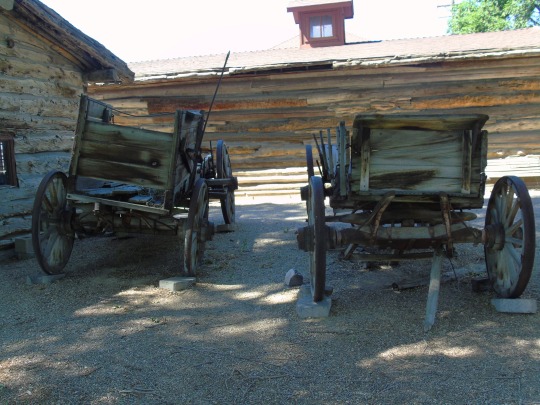



The first major wagon train heading for the Pacific Northwest set out on the Oregon Trail with one thousand pioneers from Elm Grove, Missouri on May 16, 1843.
#Old Town San Diego State Historic Park#California#Sherman Station Complex#Elk#Nevada#summer 2017#original photography#travel#vacation#USA#Deadman Pass#Oregon#landscape#log cabin#architecture#countryside#meadow#forest#flora#tree#first major wagon train#Oregon Trail#left 4 dead#16 May 1843#anniversary#US history#Pacific Northwest
0 notes